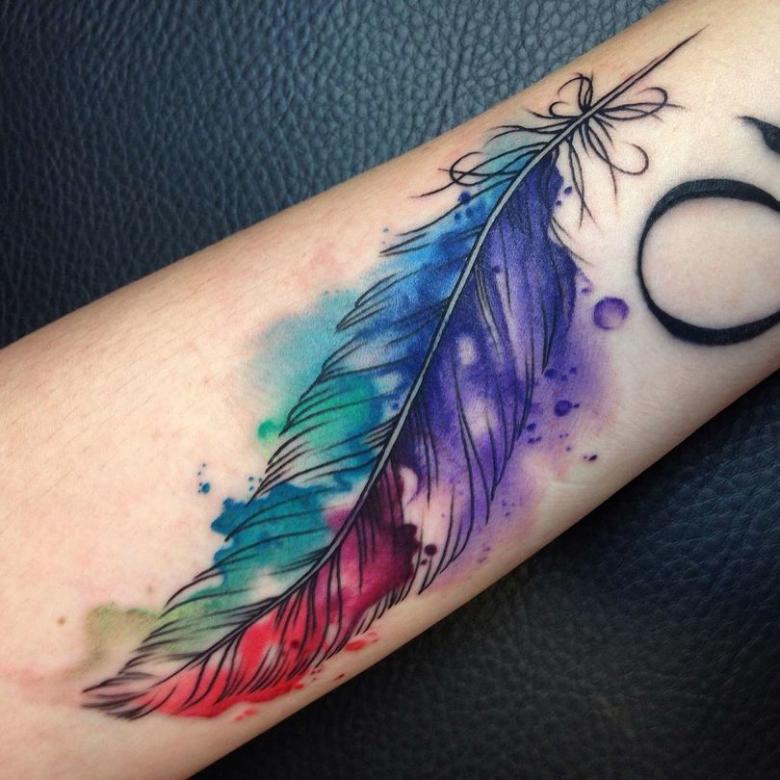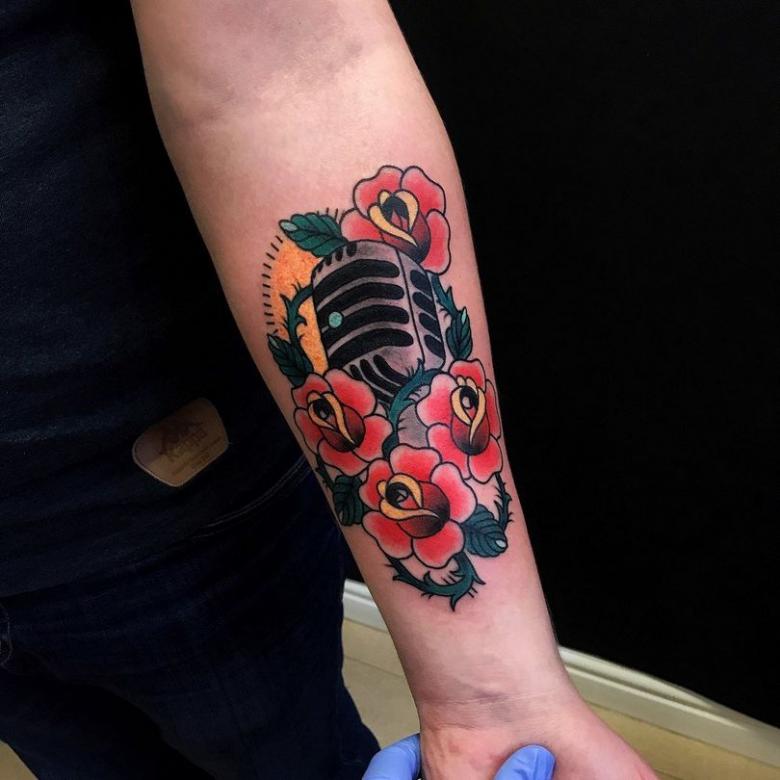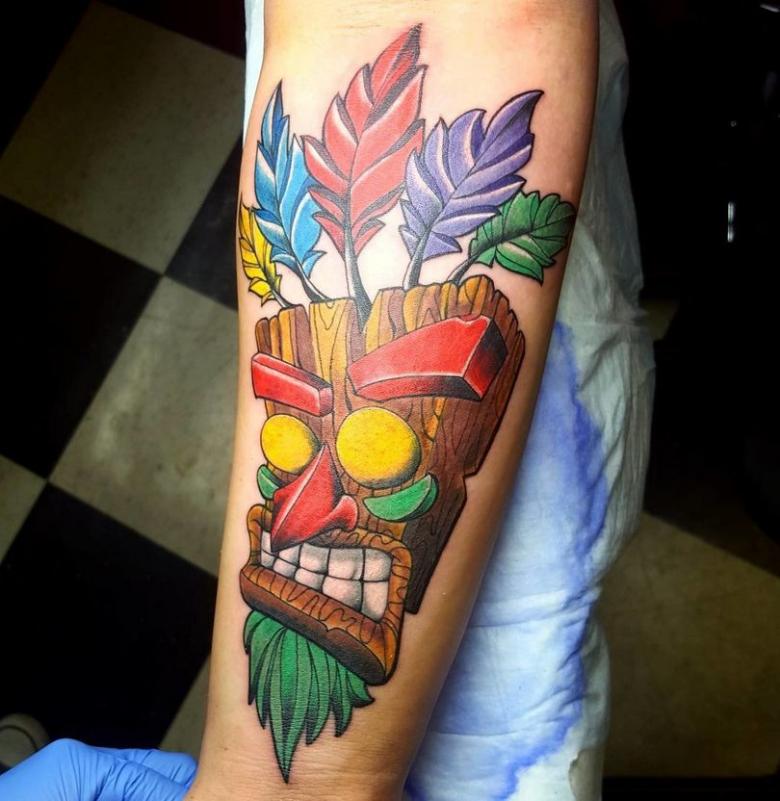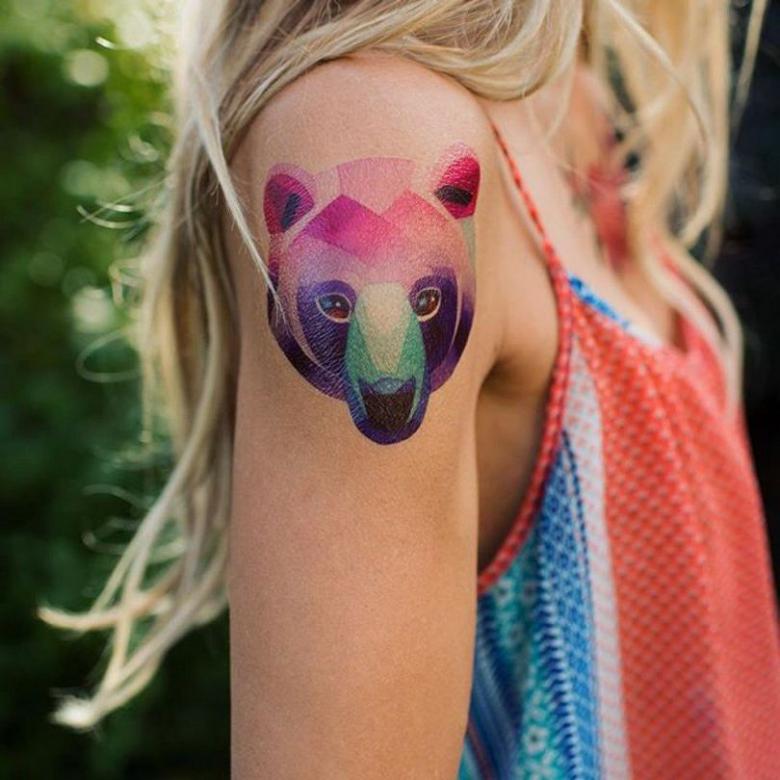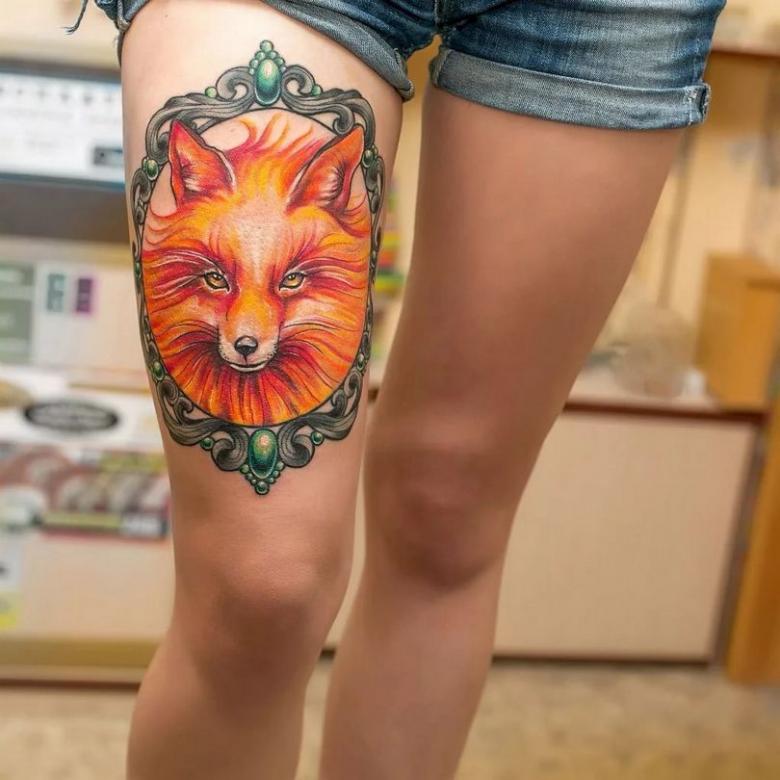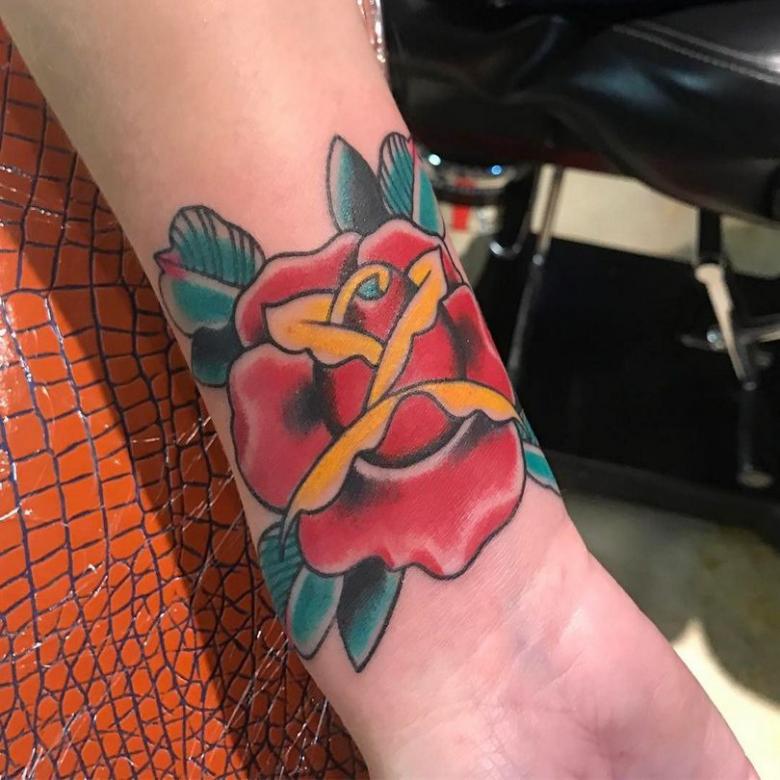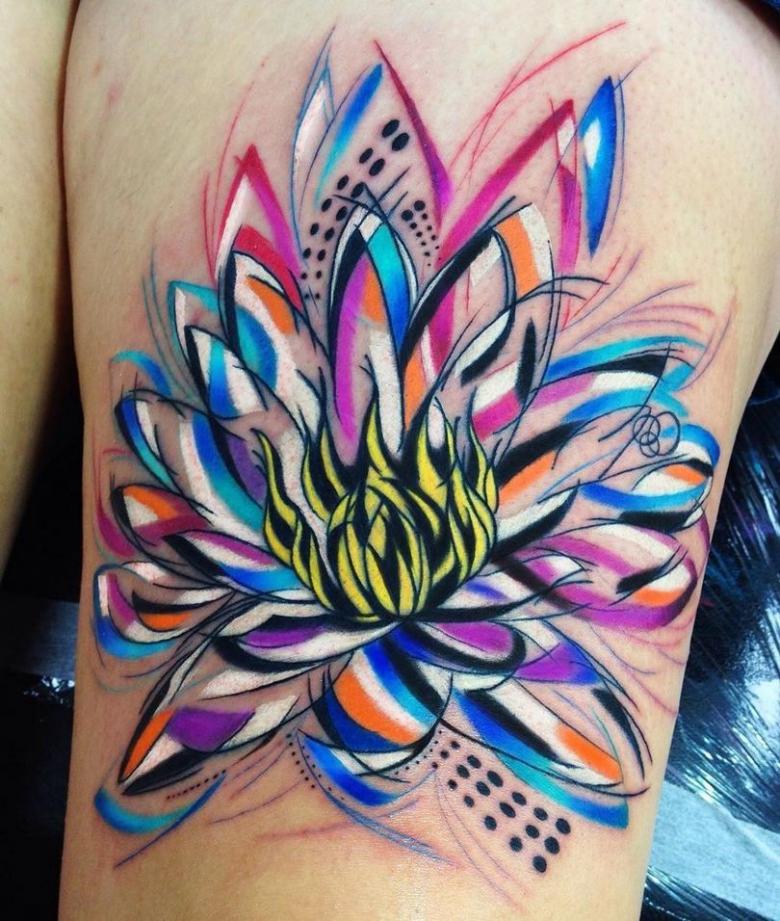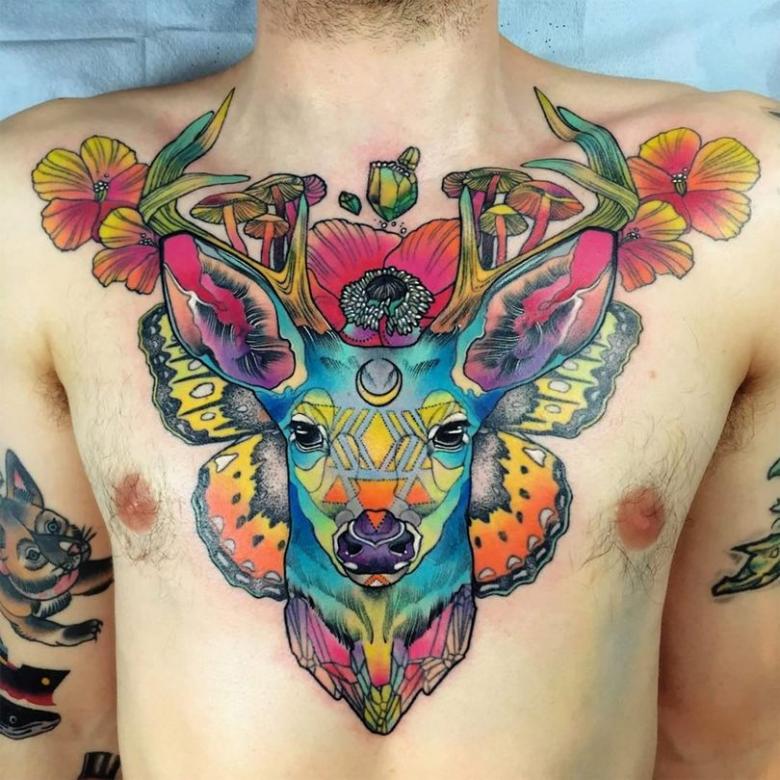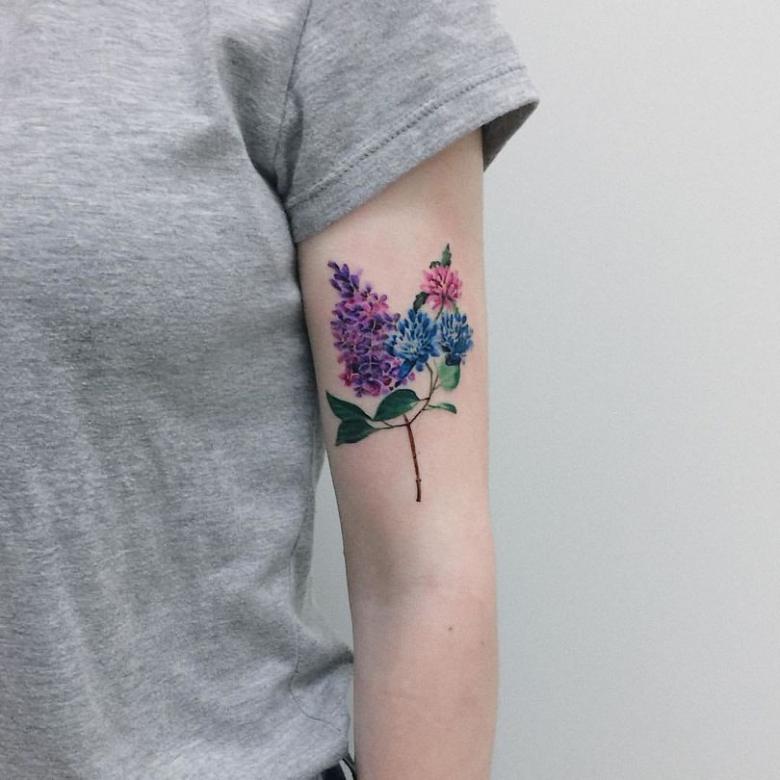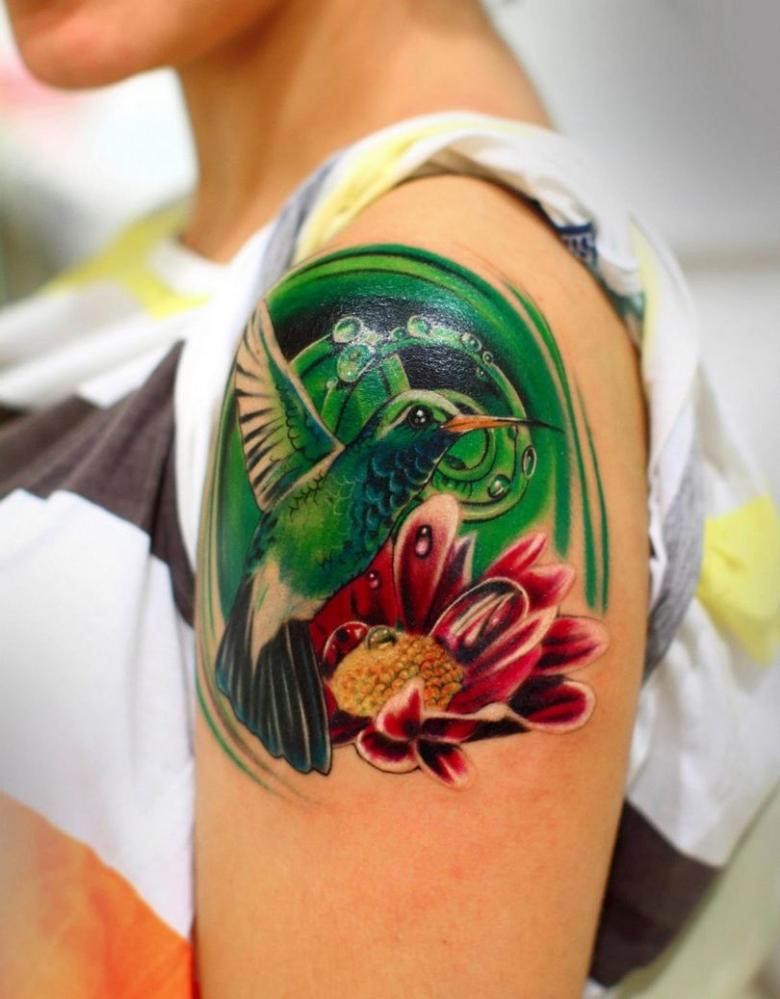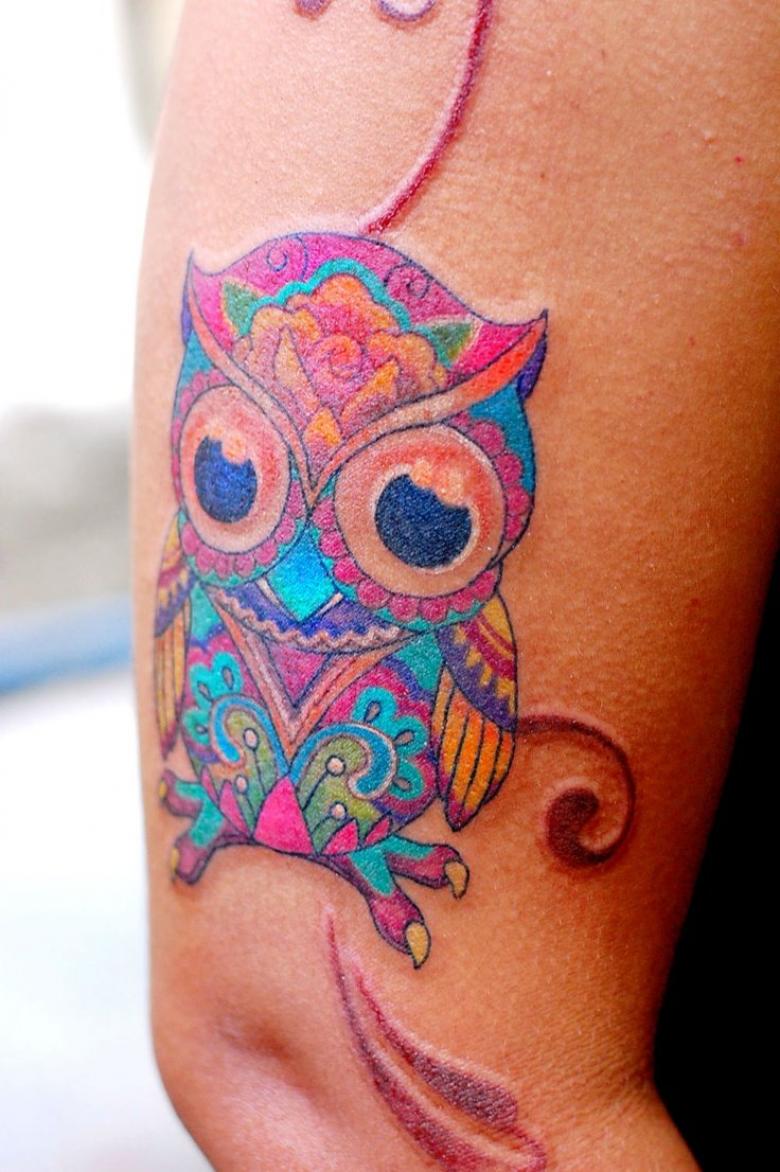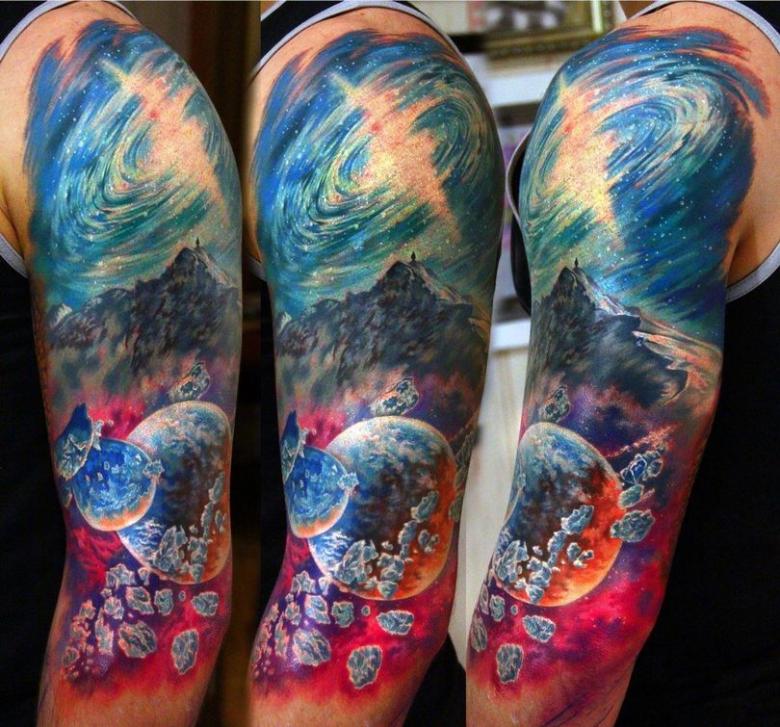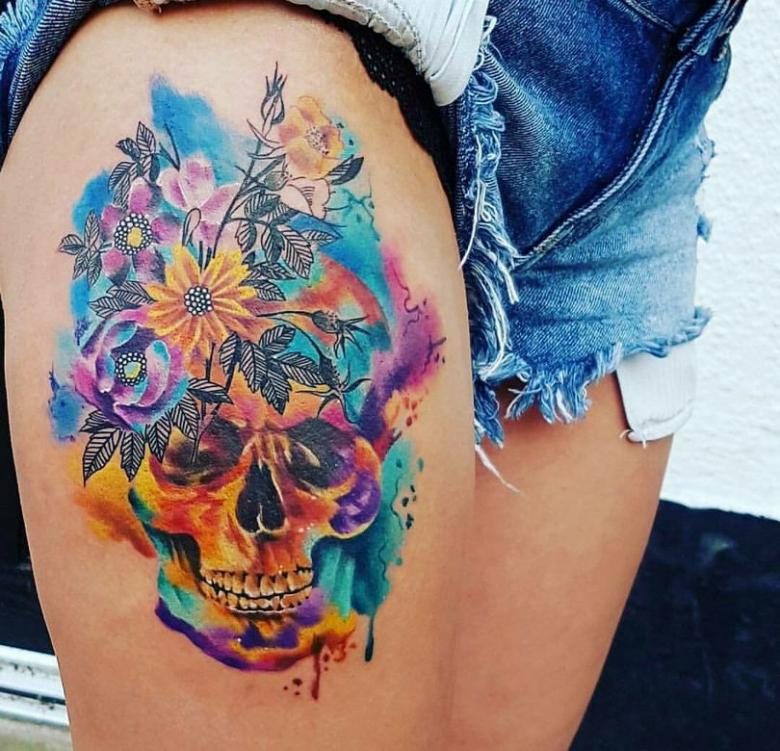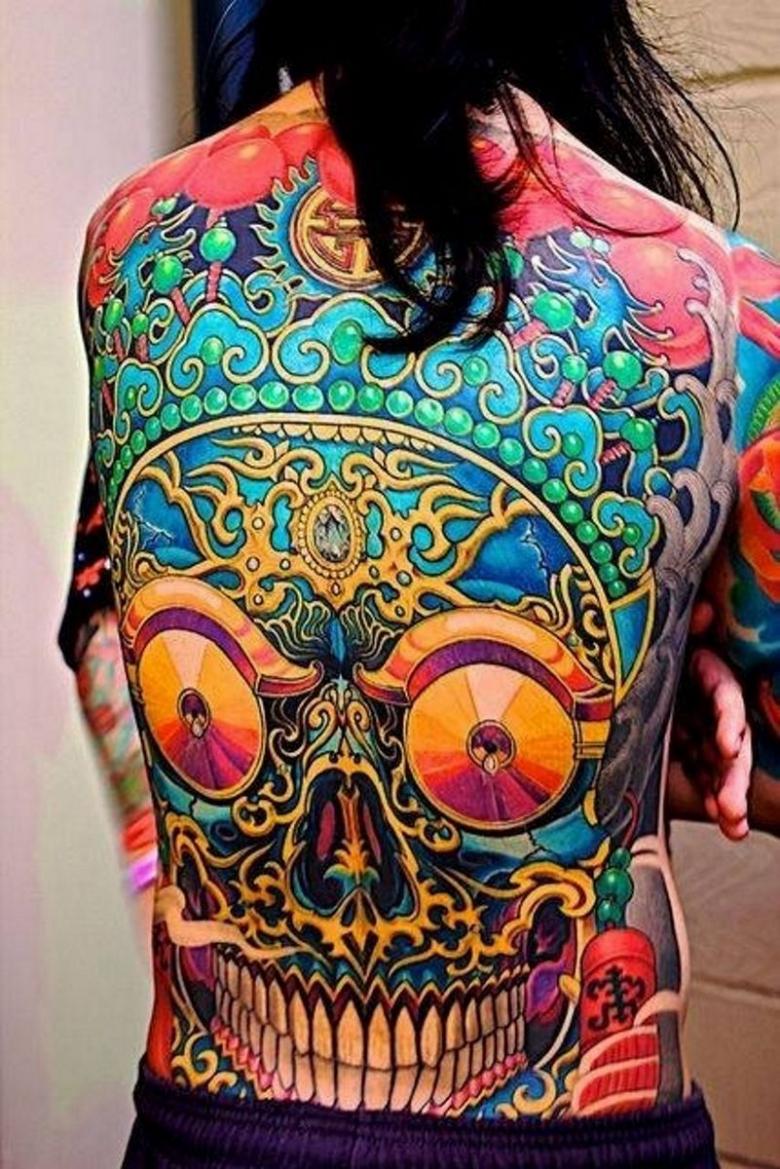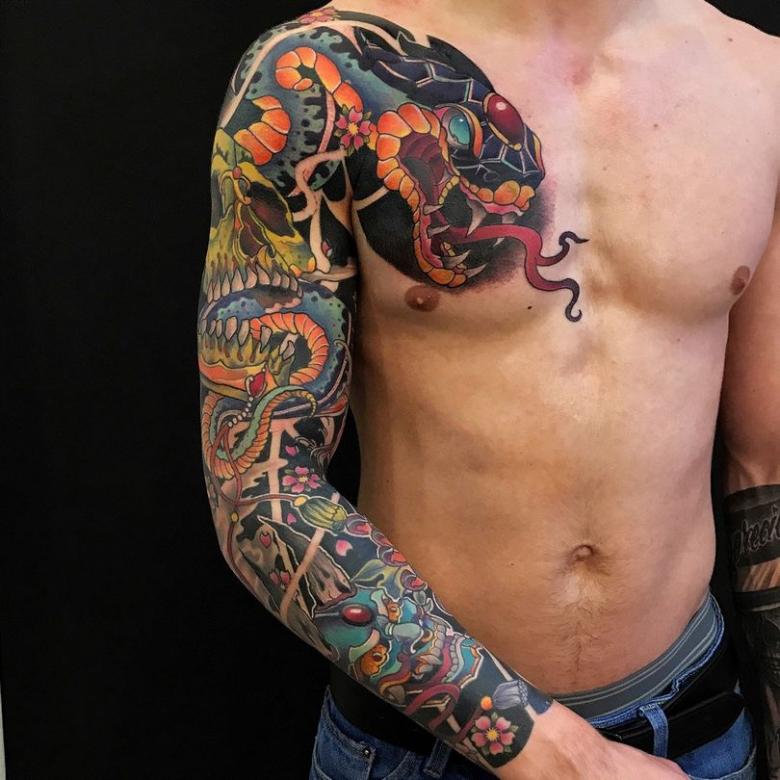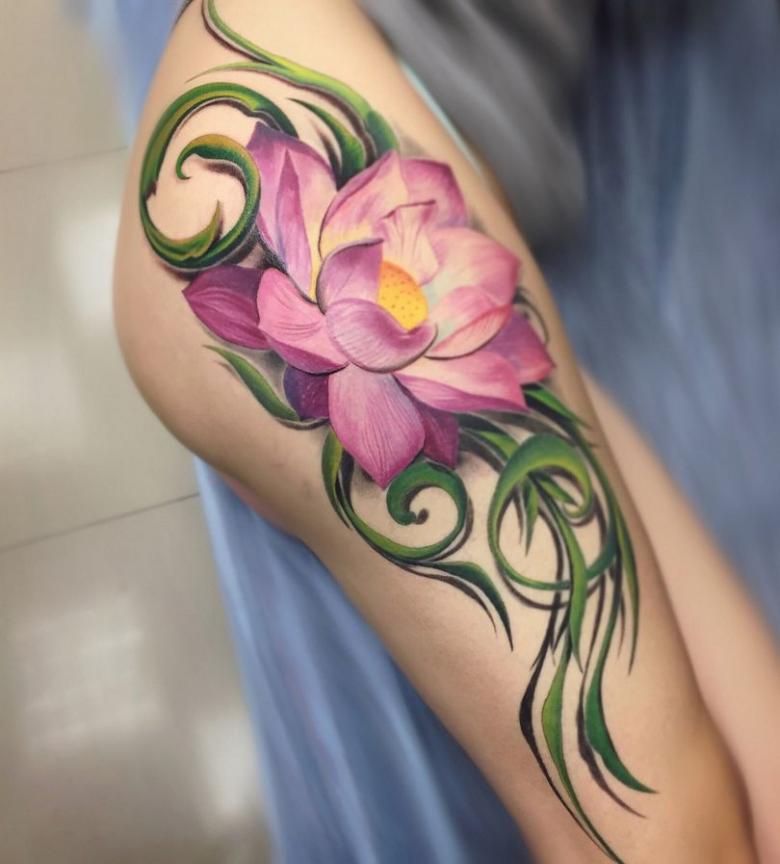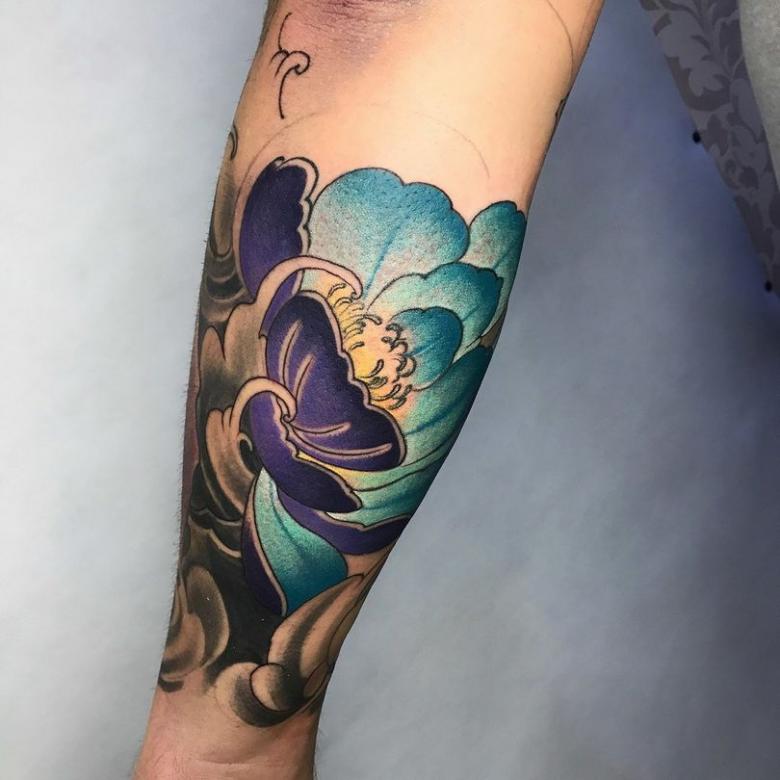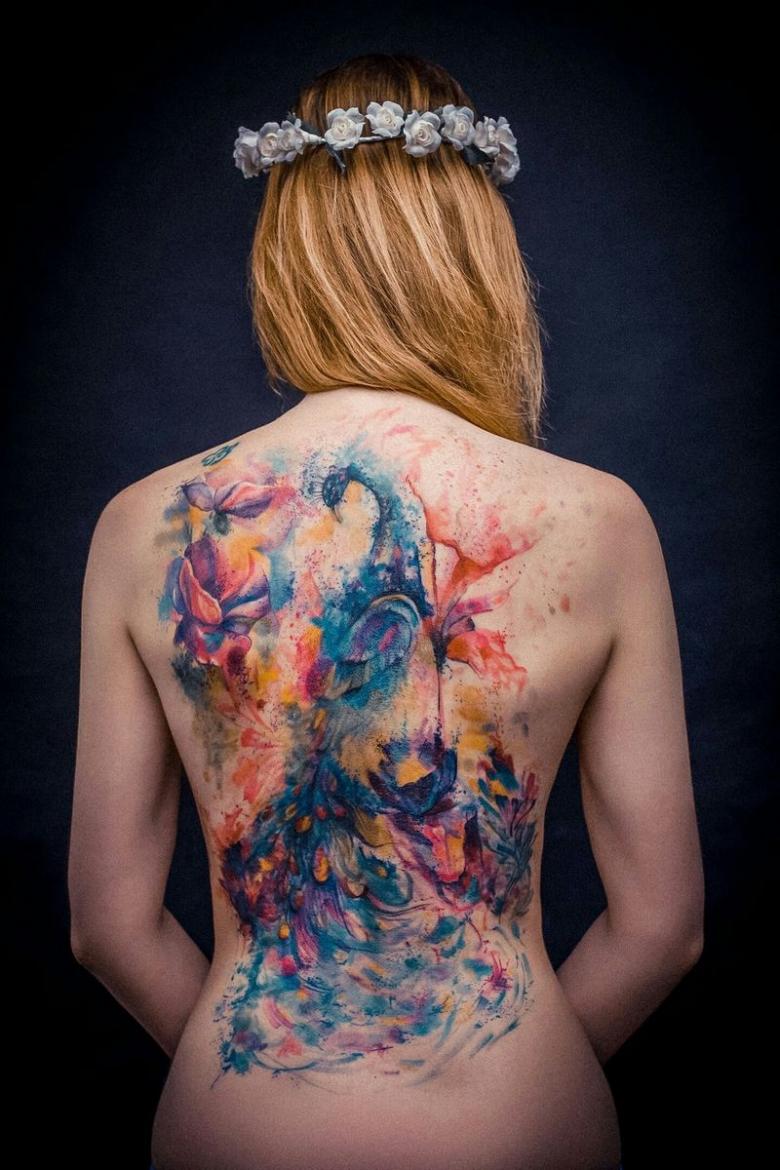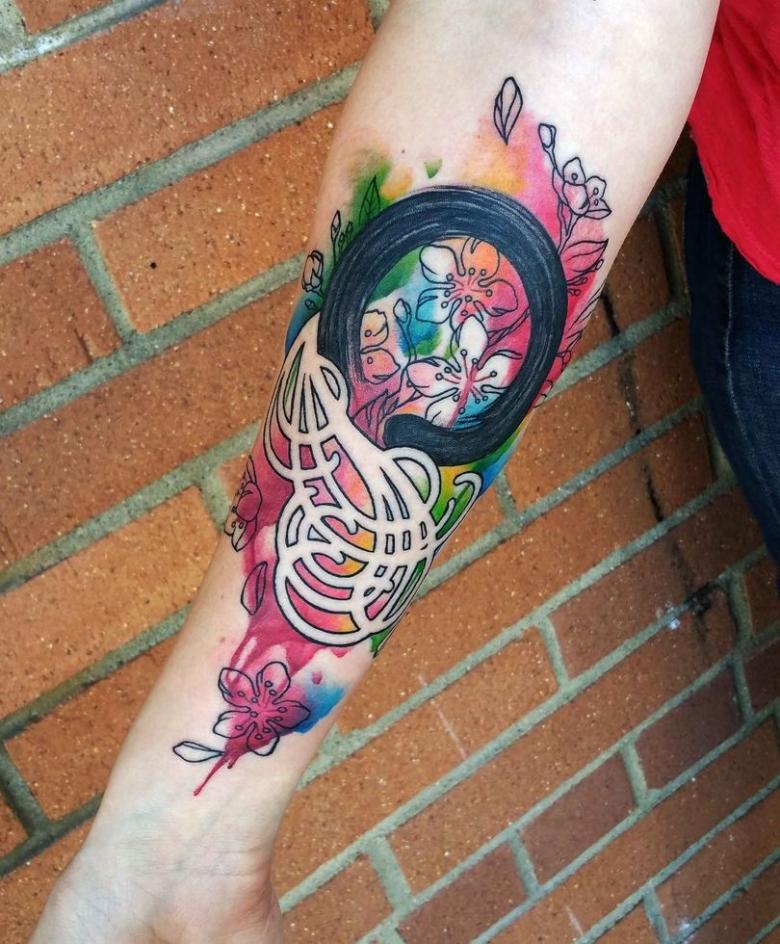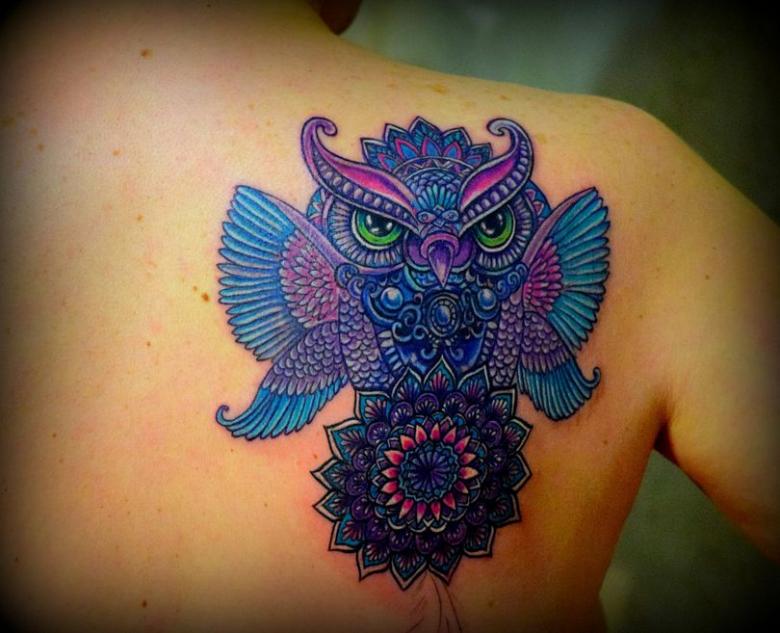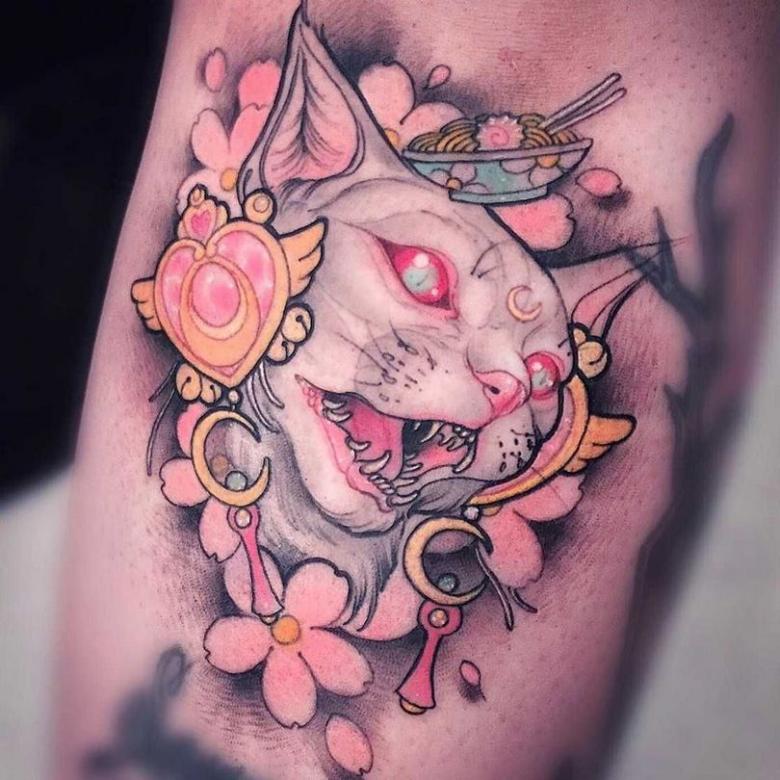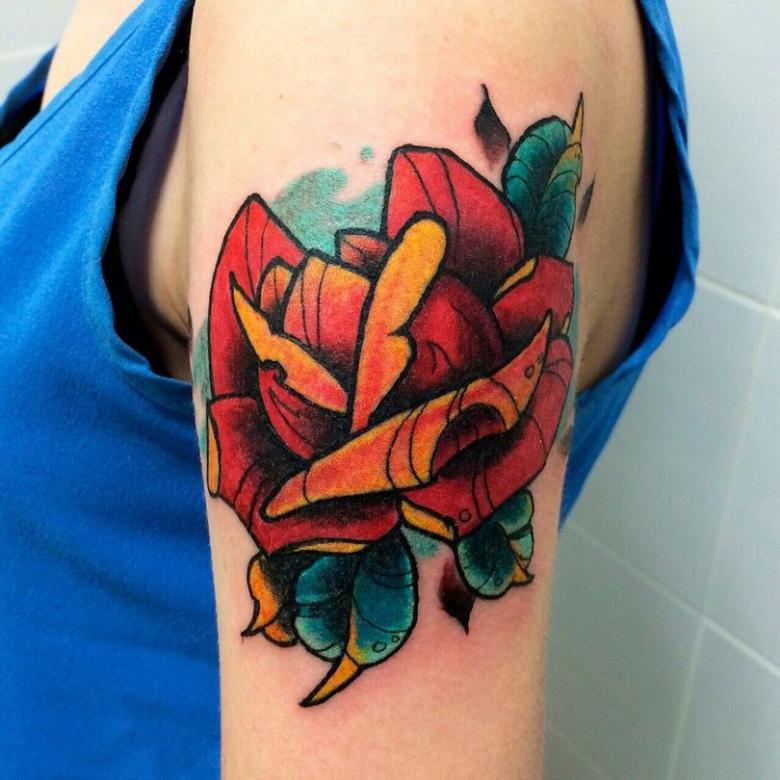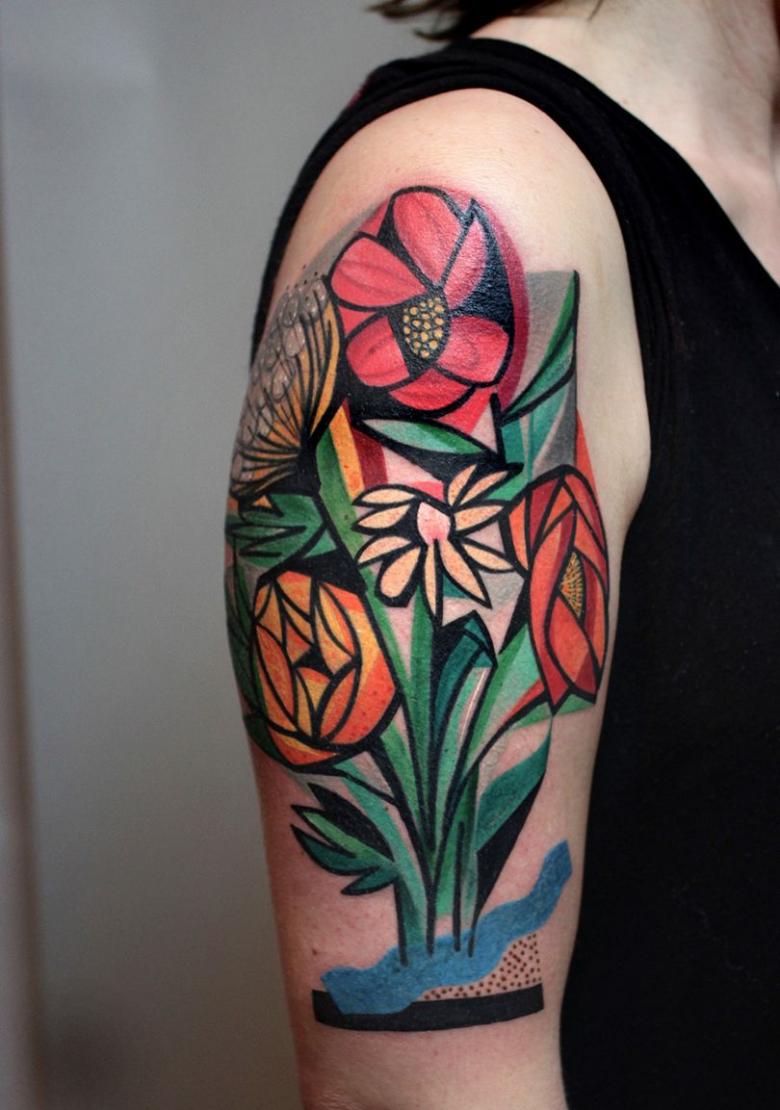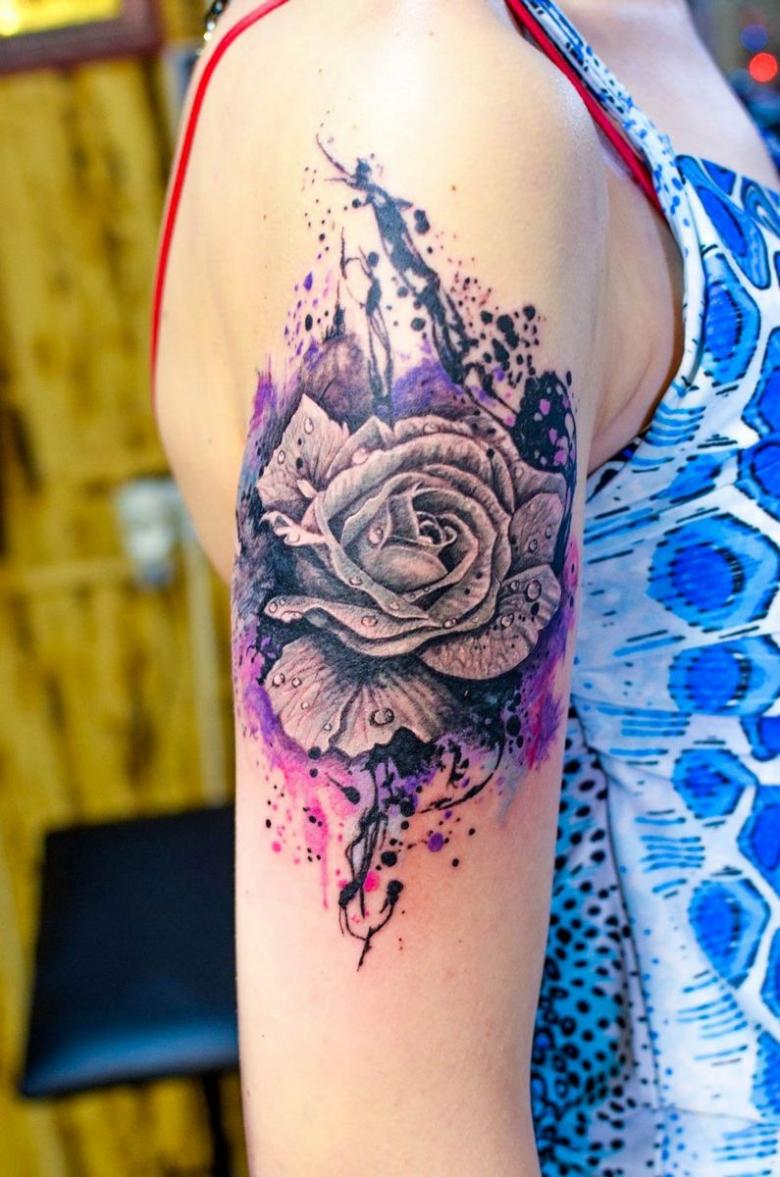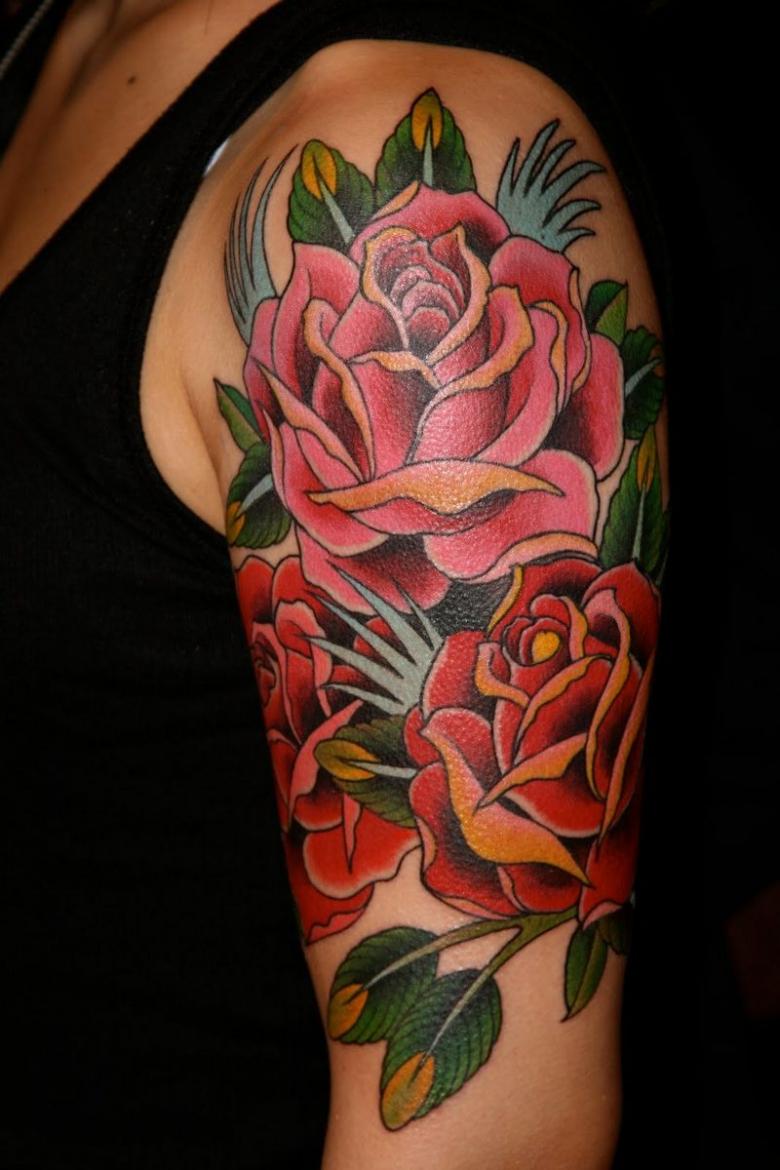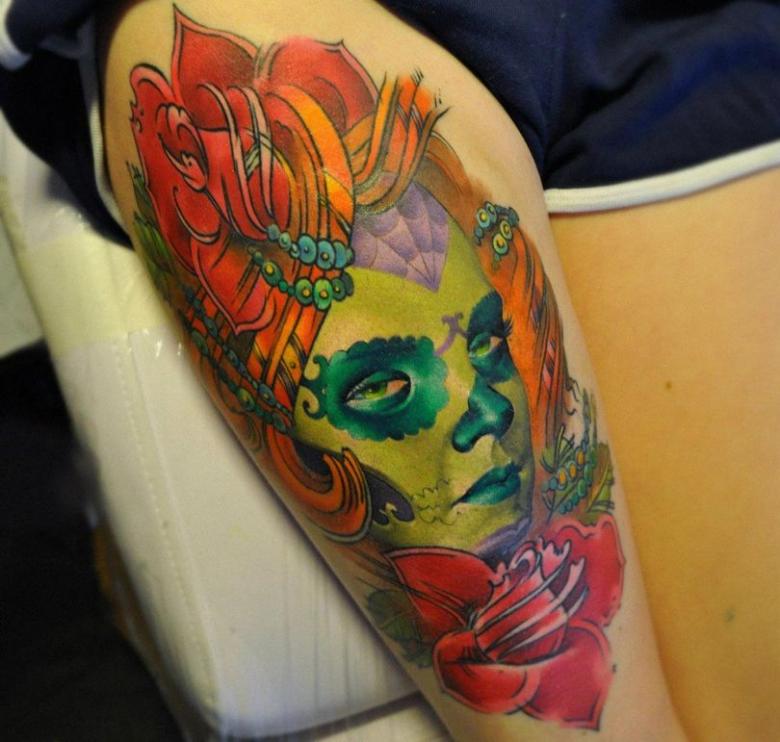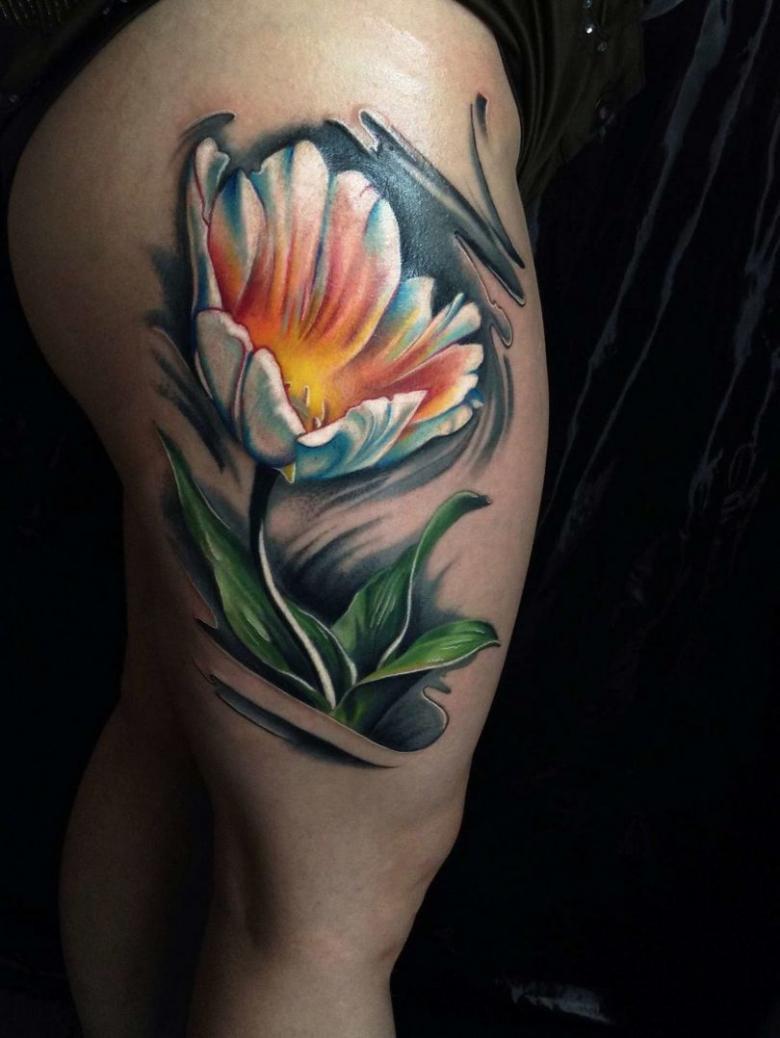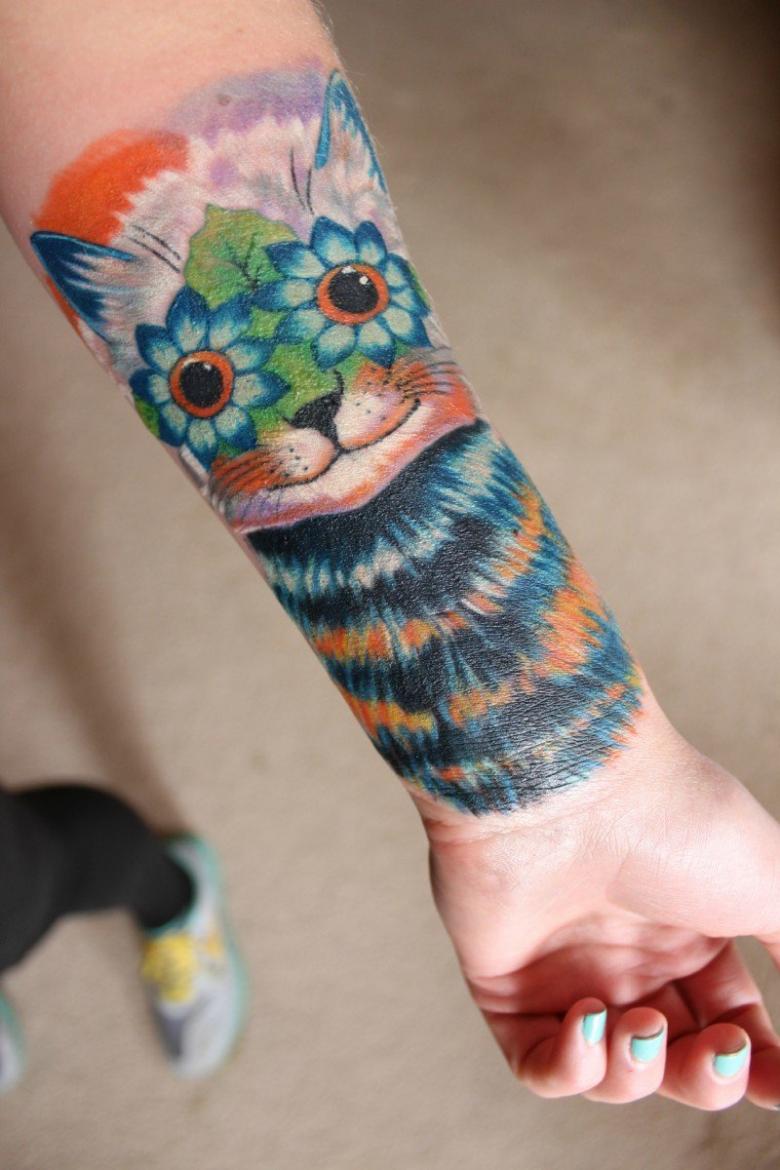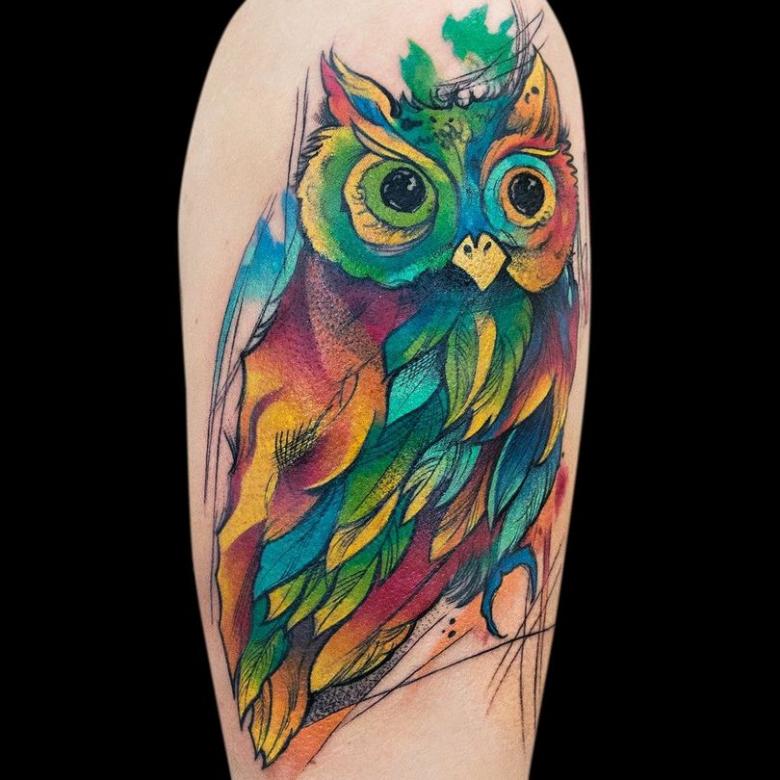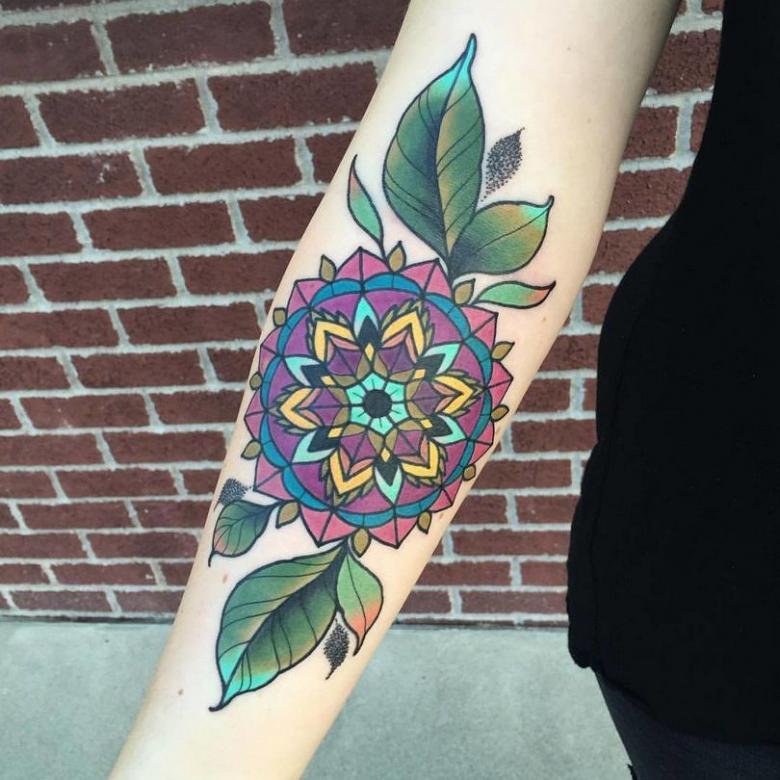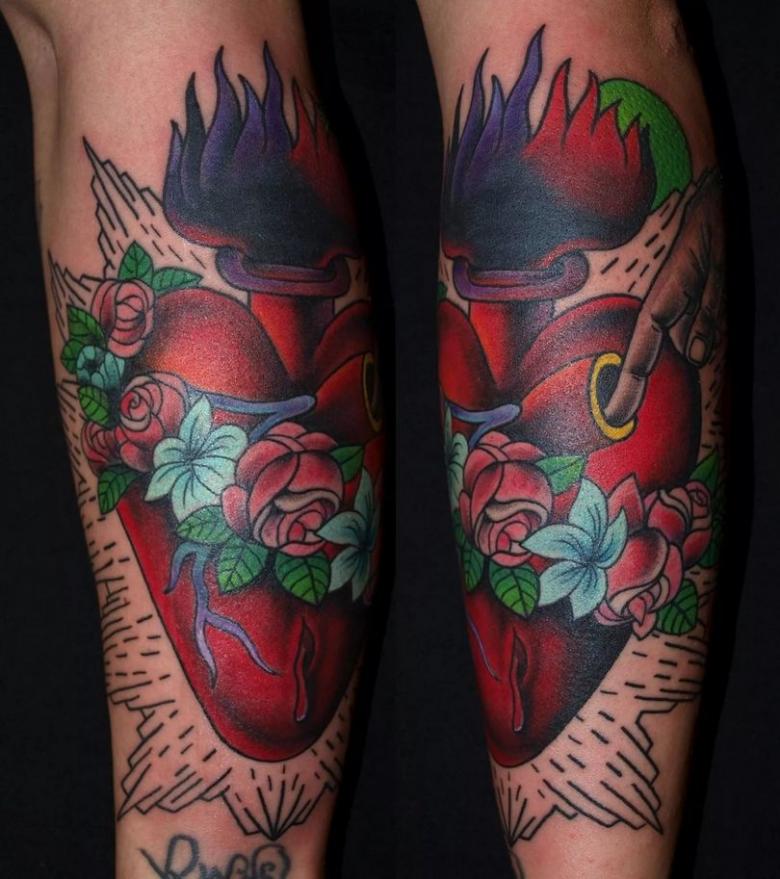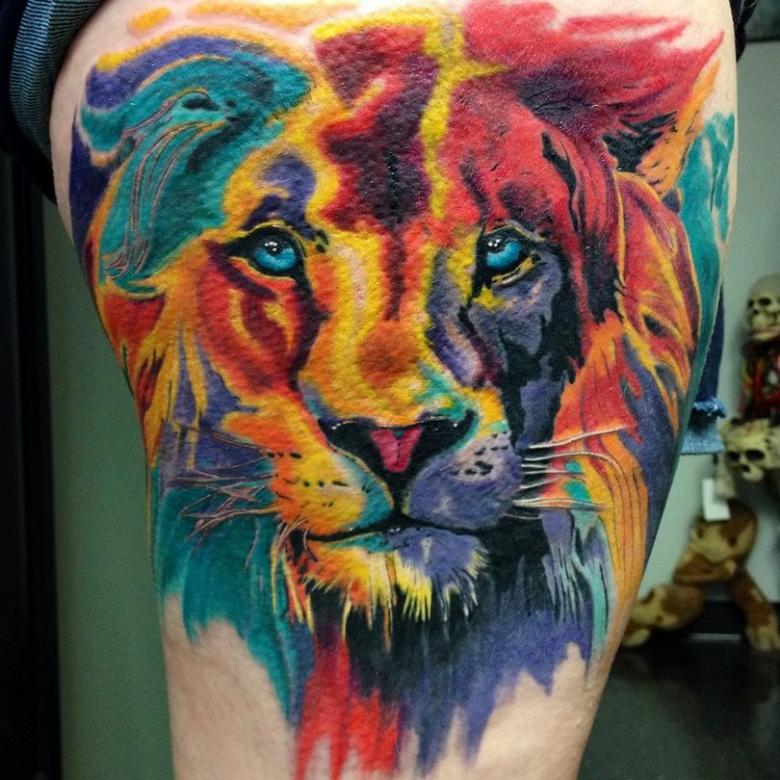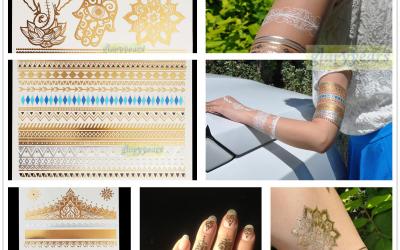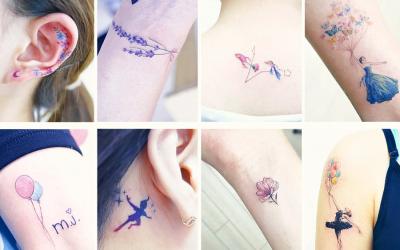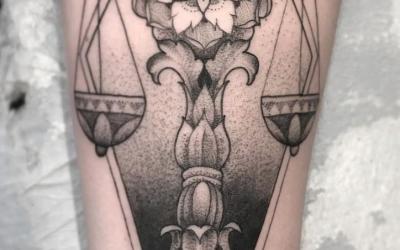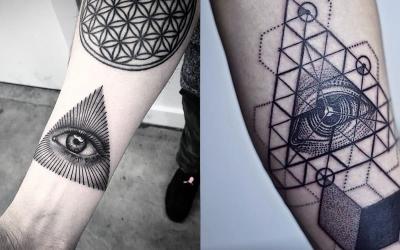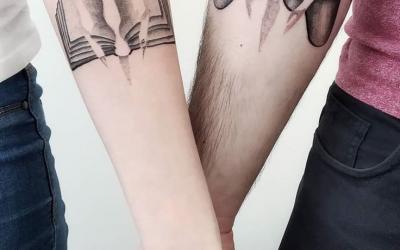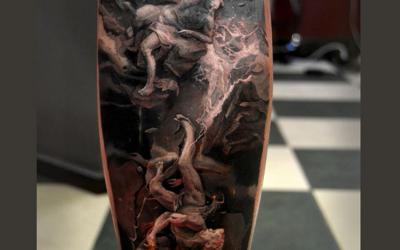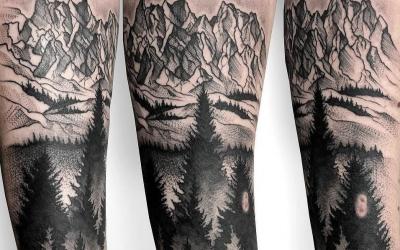Colored tattoos - sketches for men and girls, where to place, spectacular photos
The opinion that colored tattoos are a relatively new trend is fundamentally flawed. Colored tattoos go back several centuries.

Although, at that time their meaning, meaning and technology of infliction were somewhat different from modern times. Also it is not necessary to think that the bright and colorful tattoo is exclusively female variant. Women and men have some differences in this matter, but bright colors thing universal.
History of the appearance of a color tattoo
The first evidence of colored tattoos appeared in the peoples of Africa, Asia and Polynesia. In Europe, the color tattoo came at the beginning of the last century.
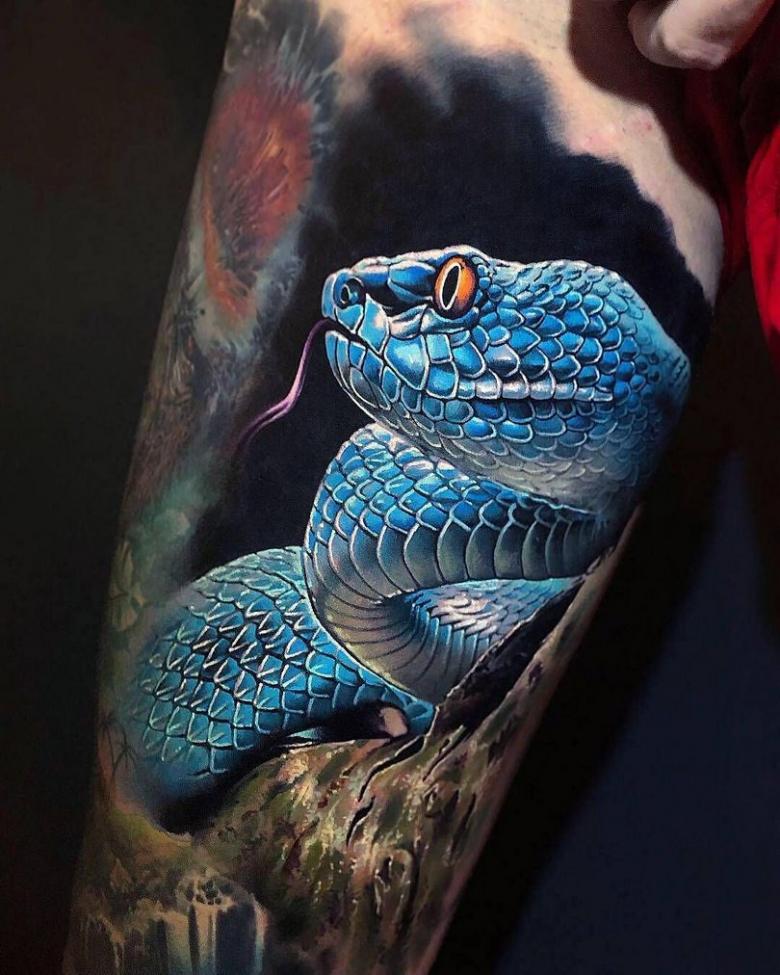
The birthplace of the color tattoo is considered to be Japan, as full spread it went from the Land of the Rising Sun.
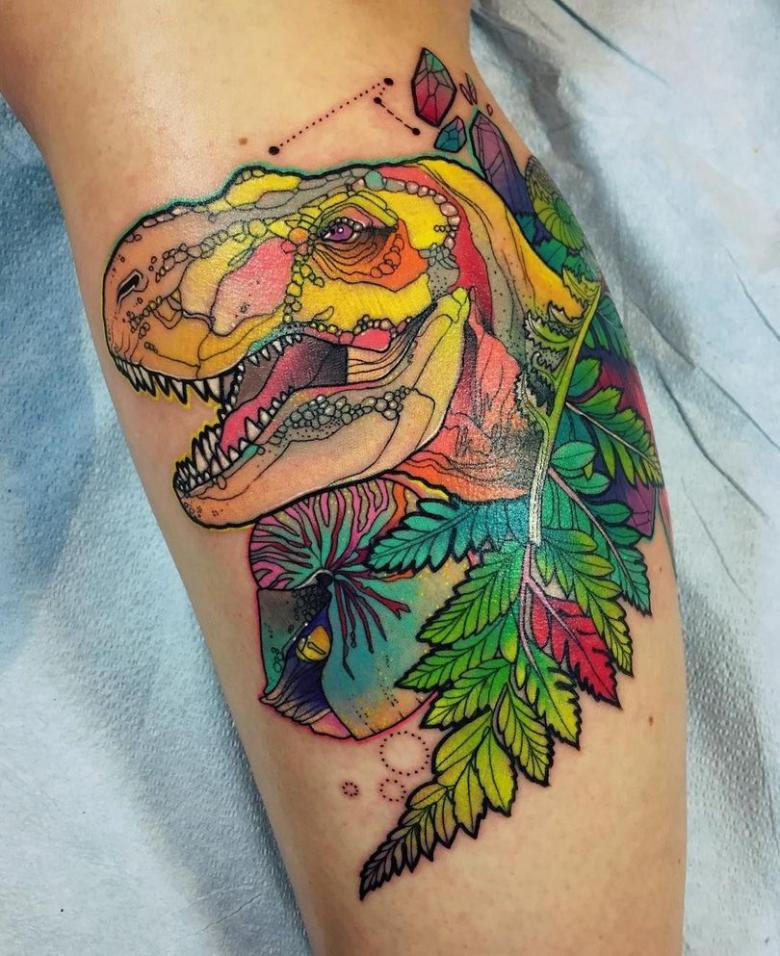
Naturally, in those days there were no bright, neon or glowing pigments. Yes, and a multiple choice of shades of the same color as in modern tattoo studios, too, were not.
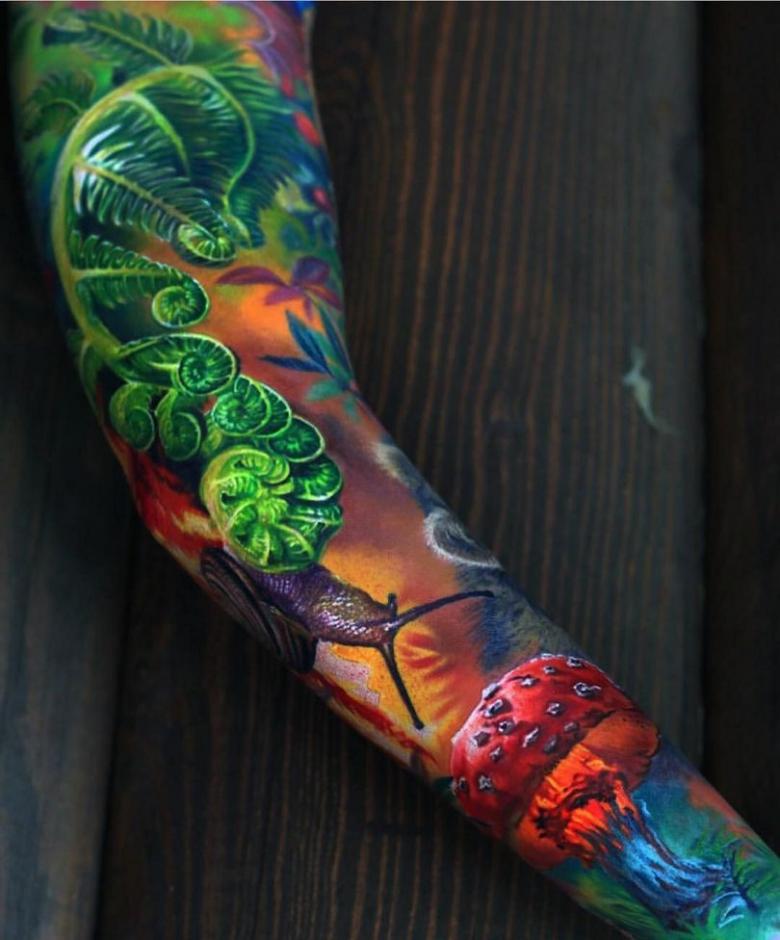
Such pigments appeared only when the fashion for colored tattoos reached Europe. Before this epochal event in tattoo industry all color pigments were produced on a natural basis.
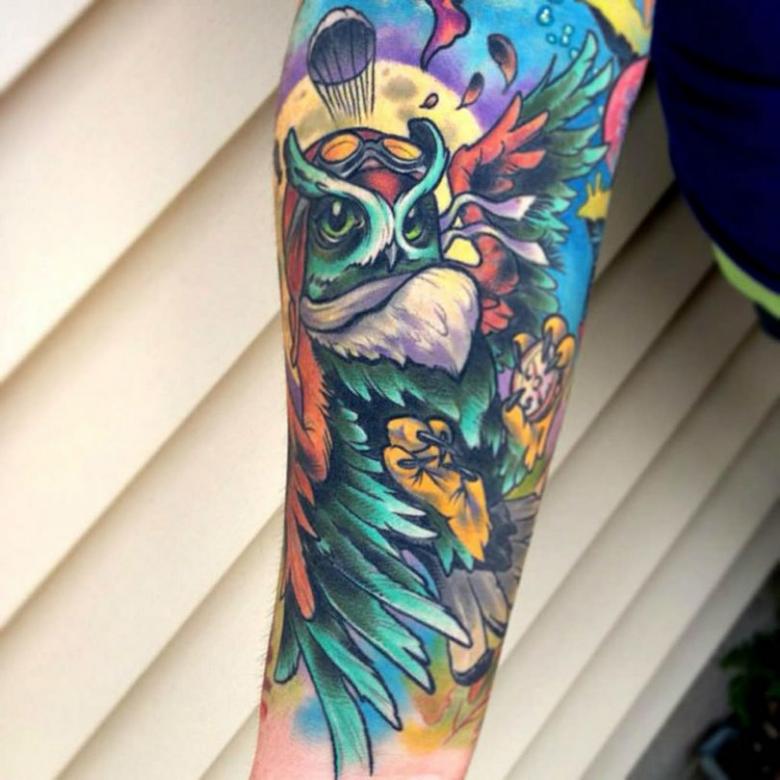
Colors were obtained from minerals, animal feces (oyster feces provided a blue-green pigment) and plants. This often ended in allergic reactions and not the best effects on the skin in general.

In the early 20th century there was an active fashion for oriental culture, Japan became the epicenter of colored tattoos and the active production of quality artificial dyes began.
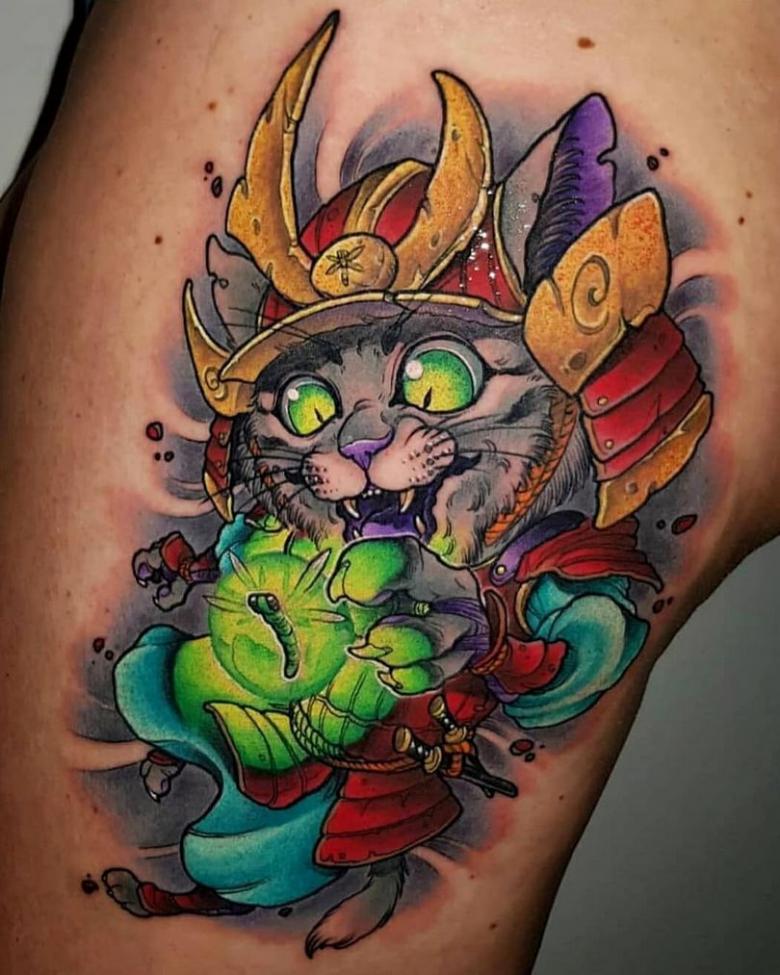
This particular country is characterized by a riot of colors. White was considered mournful, and black was a neutral color for scientists. The life of the rest of the citizens in everyday life abounded in bright colors for all occasions.

Two particular groups of society - firemen and geisha - began to apply bright colors to their bodies. Heat resistant fabrics did not exist at the time.
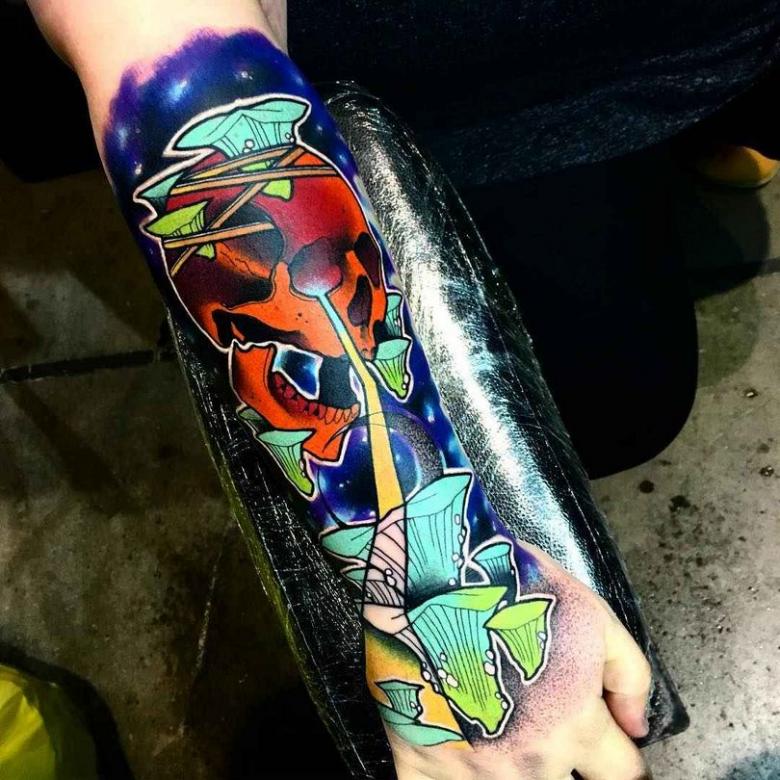
Firefighters were forced to work without uniforms. A colored tattoo on the body of such a person commanded respect, was visible from a distance and allowed them to pass unhindered through the parting crowd to the place of the fire.
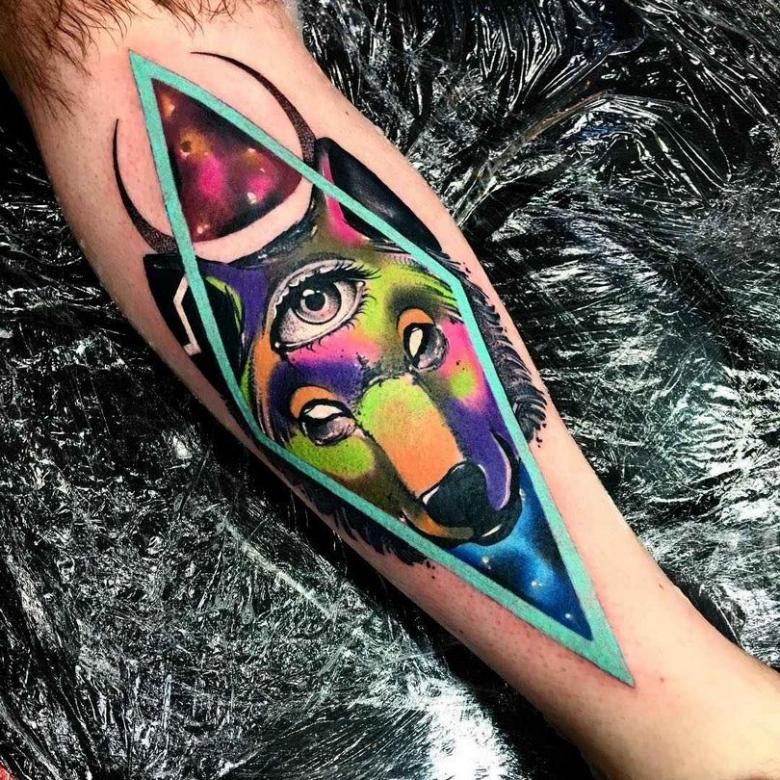
In a sense, the riot of colors on the skin replaced clothes. It was this property of the colored tattoo that the geisha took advantage of.
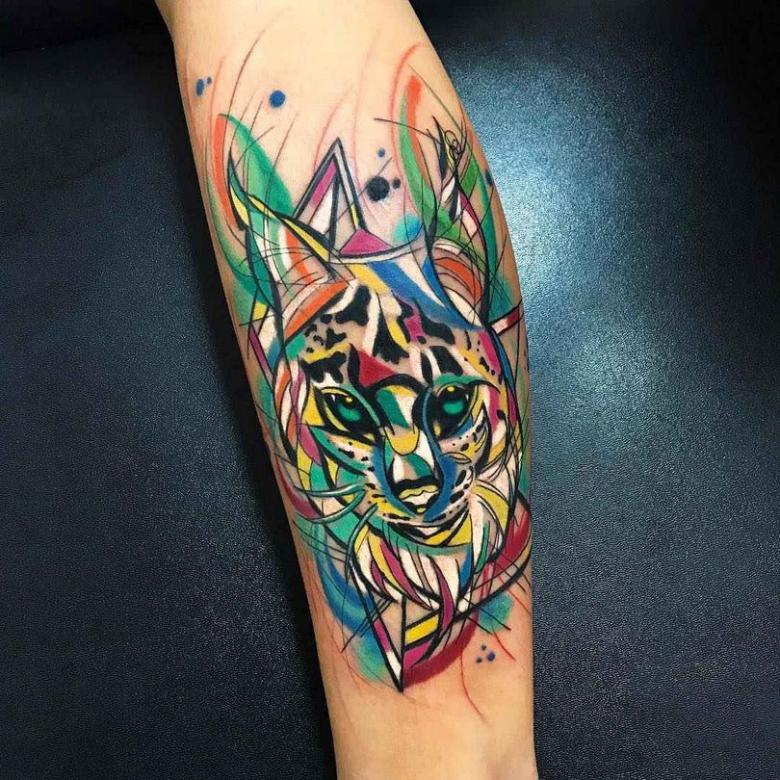
In geisha culture, it was forbidden to display nudity, but the profits for such an act were very impressive. Since colored tattoos served as an imitation of clothing, it allowed the girls of the industry to circumvent this prohibition.
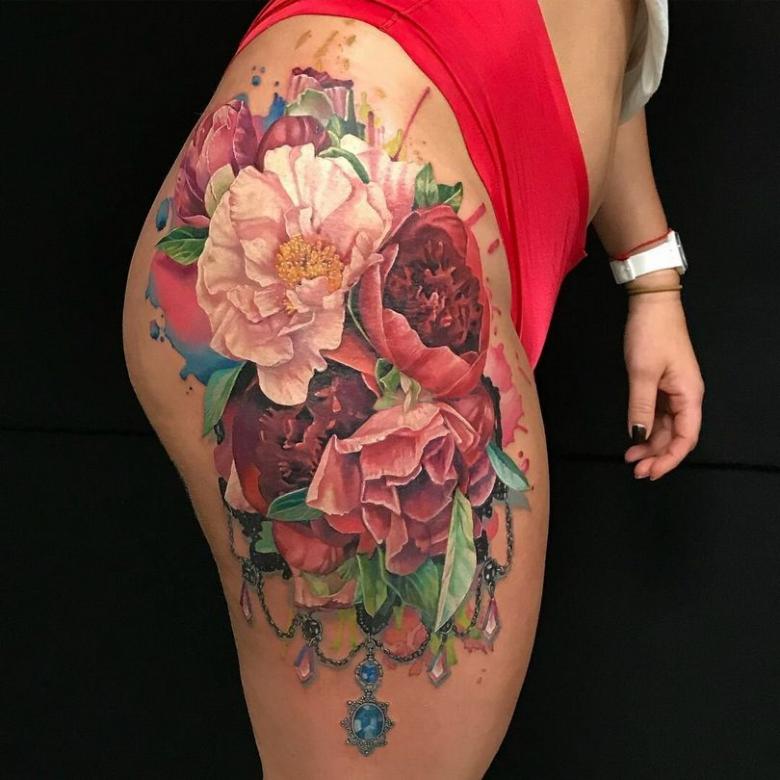
Drawings depicting Japanese dragons deserve special attention. They originated in the province of Honshu and Hokkaido, after a trip to which Emperor Nicholas II returned with an image of such a colored dragon on his back. In Japan, such a tattoo was considered a symbol of power and grandeur.

Pros and cons of bright colors
Like the monochrome tattoo, the colored one also has its pros and cons. The disadvantages, in fact, are not so many and most of them are solved by the choice of a good master.
- Level of detail;
- Color support;
- Skin features and color reproduction.

A colored tattoo costs significantly more than a black one, because working with color is much more difficult. In a full picture, a riot of hues will very easily give away any defect and mistake of the master. For this kind of work, choose a good and competent specialist.
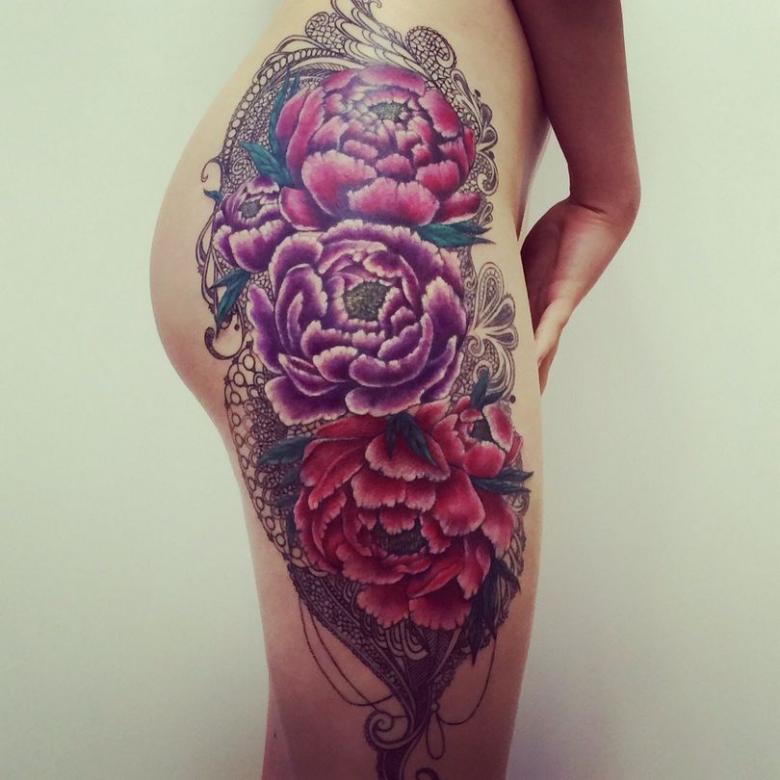
Also, do not forget that everyone's skin type is different and everyone is dominated by different color features. And if green shades will look good on pale skin, on the rouged and tanned skin they will create a bruising and painful effect. Another important nuance in this matter is the location.

When the master is evaluating the brought sketch, he already from personal experience can say which colors on this part of the body will look lush, and which ones will look dull and sad under the natural curve and movement of the skin.
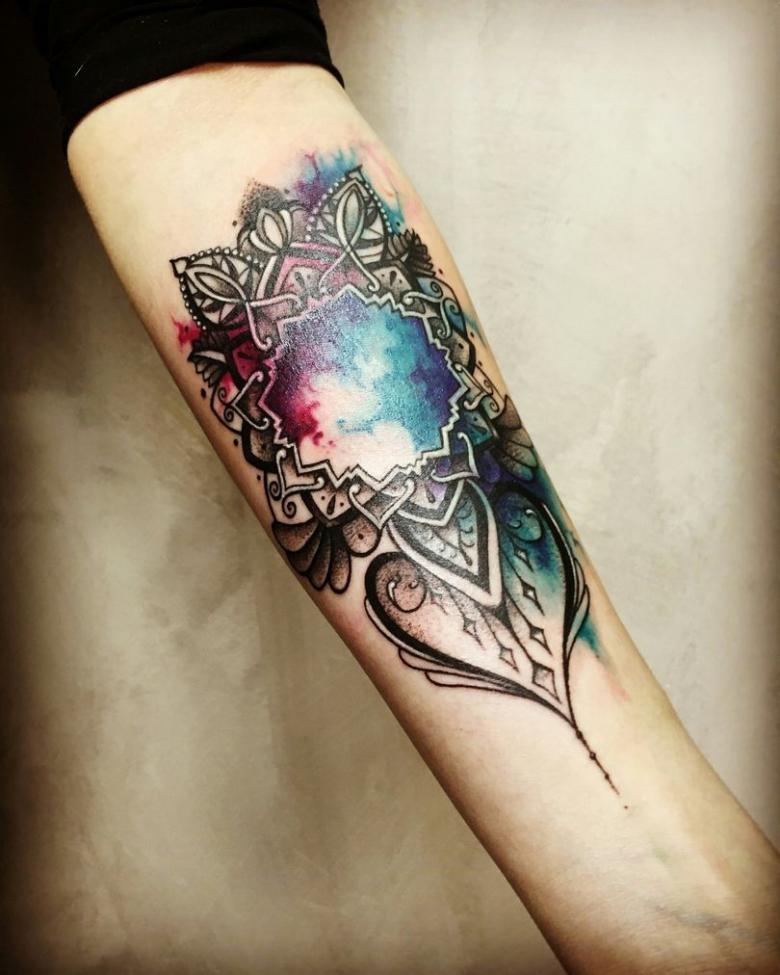
If the first two disadvantages are easily solved by a quality selection of pattern and style, then with the third point is a little more difficult. Colored pigments suffer more from time and environmental influences.
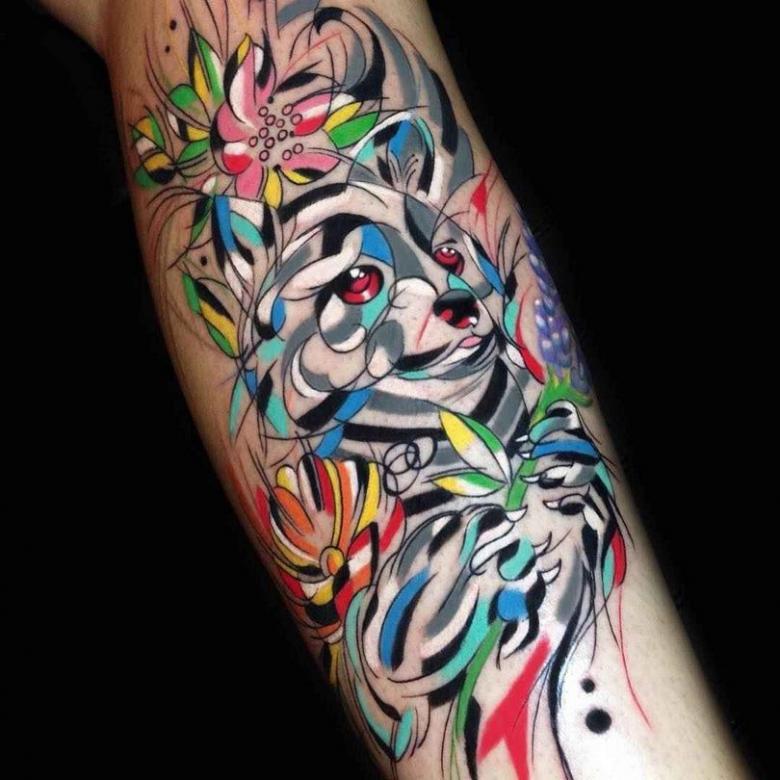
After a few years, the colors become pale, the contours are blurred, and the aesthetic composition is compromised. Renewing a tattoo every few years (usually 5-10) is a natural necessity.
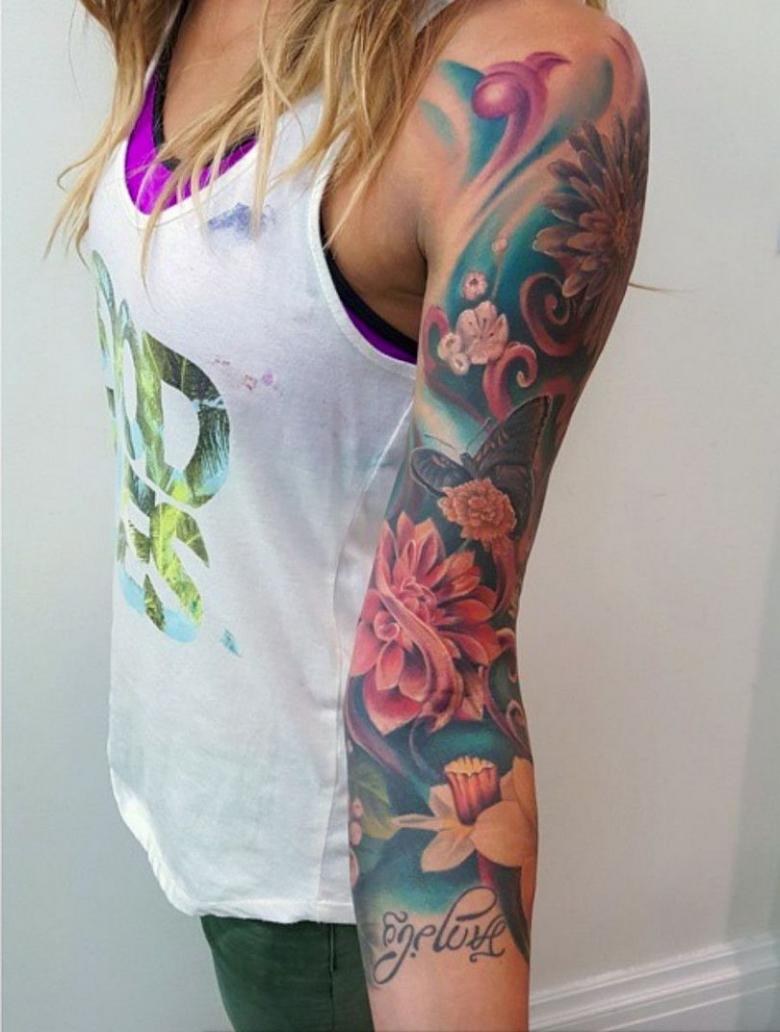
Colored designs have advantageous advantages over monochrome options. A greater variety of styles and options, the ability to express with color everything from the inner world to a particular time era. Each color has its own specific meaning.
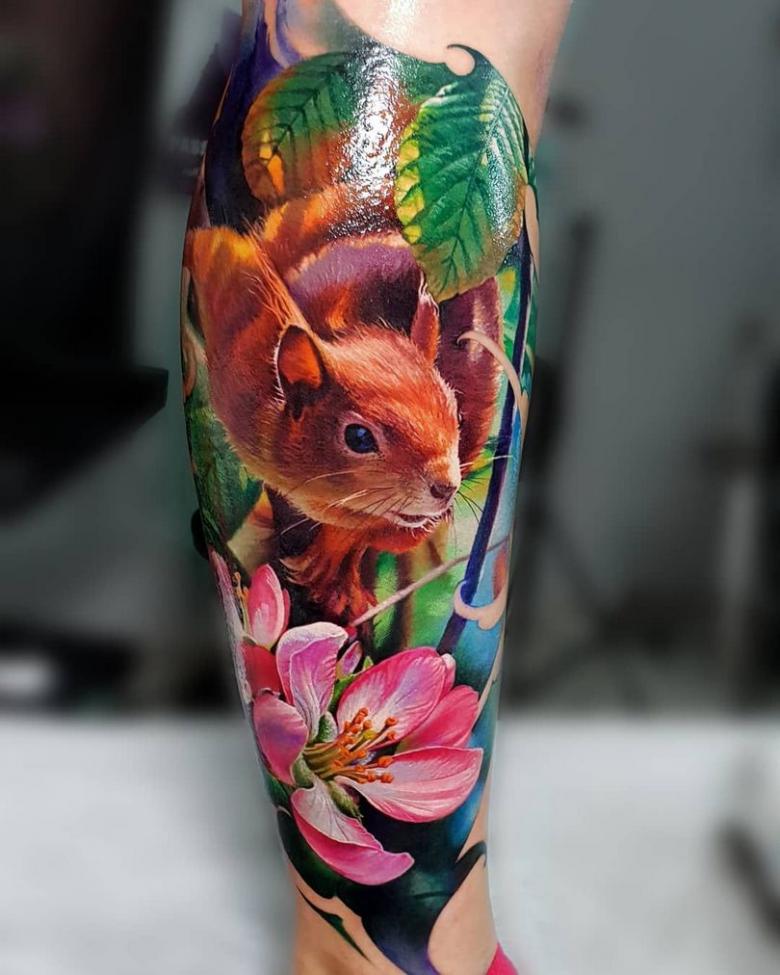
Purple shades are not only leadership, power, authority. They are also notes of ancient Rome - the color was at the heart of the whole gamut.
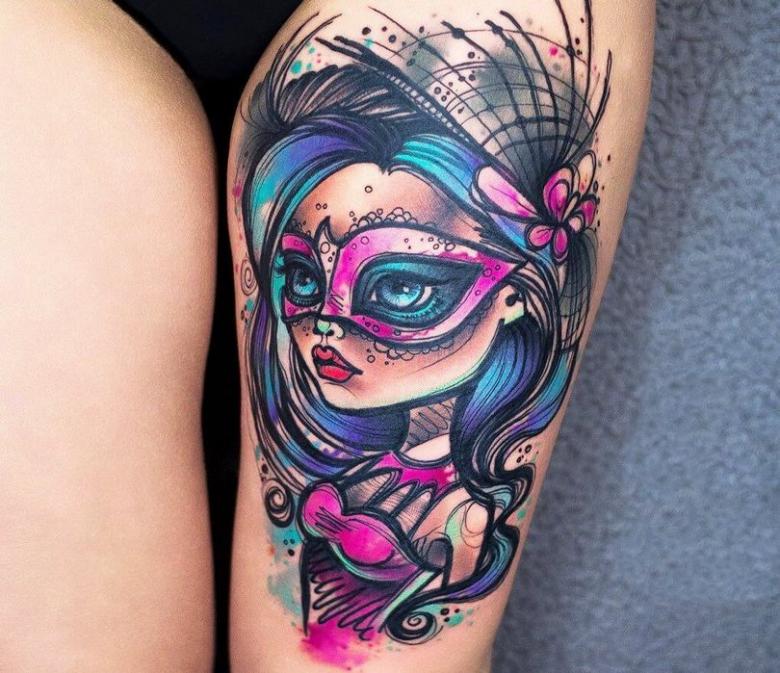
Shades of green and emerald are ideal for sensible and reasonable individuals, such as was the case during the reign of Queen Victoria.

Pink is romantic, orange and yellow for diplomacy and flexibility of character, blue and purple for dreaminess and good imagination, and brown for stability and calmness.

And all these are just a few options for the color variety. Modern industry allows you to work with contrast and subtle transitions through the mixing of colors.

Important aspects when choosing
The choice of style, color and all the details of the tattoo is a very painstaking activity. If you do not take into account all the nuances or choose an inexperienced master - conceived masterpiece risks turning into a rainbow stain. Here are the basic nuances that you need to pay attention to:
- The experience of the master specifically in color tattooing (it is enough to study his portfolio);
- Type and color of the skin;
- The chosen style of work;
- The main color scheme;
- Combinability of colors.
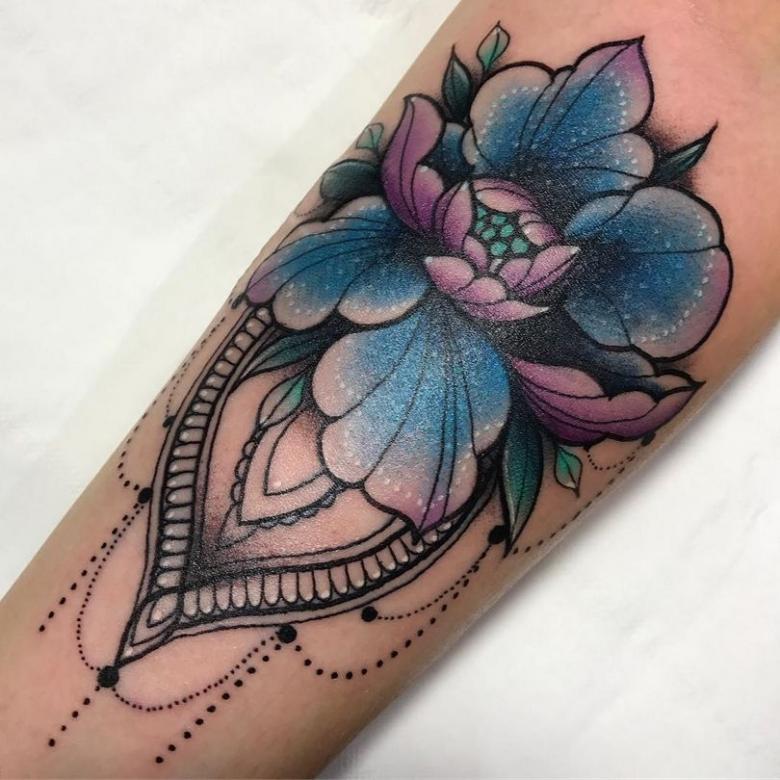
If you have chosen a small drawing, like a flower on your arm - definitely do not try to fit all the colors you like, seen on the tattooist's desk.
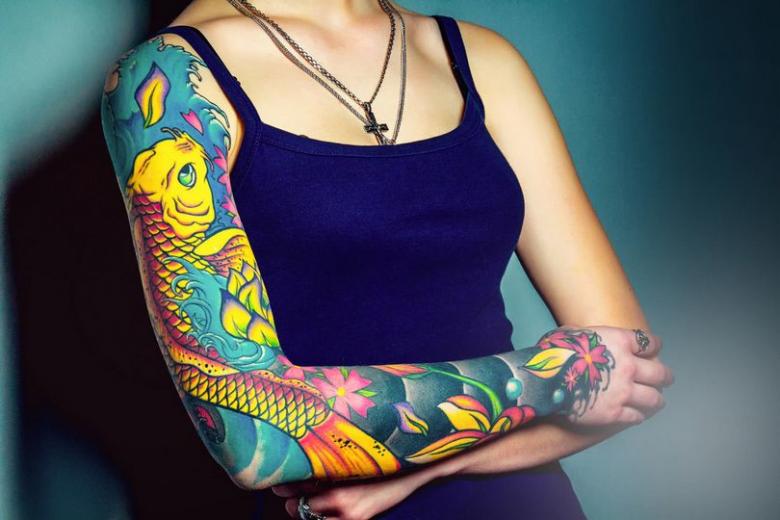
A large and voluminous work should have one dominant color, the rest - the elaboration of details and contrast of the work, otherwise it will all turn into mottled spots. Some shades tend to fade quickly - they should not be used on large areas.
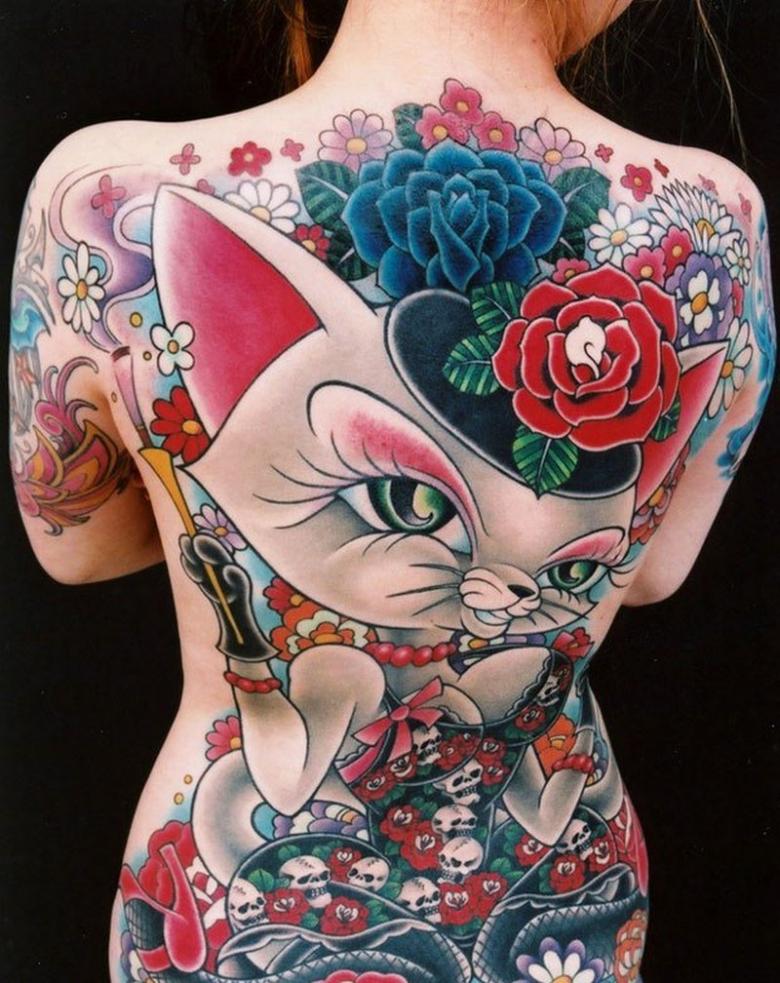
The style of work is also important. When choosing a sketch, look through a lot of photos of finished work in the style you like and pay attention to what colors work best in this version.

Listen carefully to the master - he has a lot of experience in this business and he knows exactly how to do it better. Unsuccessful work is then very difficult to correct and not always it turns out completely.

Some techniques do not imply any colors other than black. At most, a touch of detail in white. Inscriptions, black work or dot work will look very ridiculous and disgusting if done in color and bright.
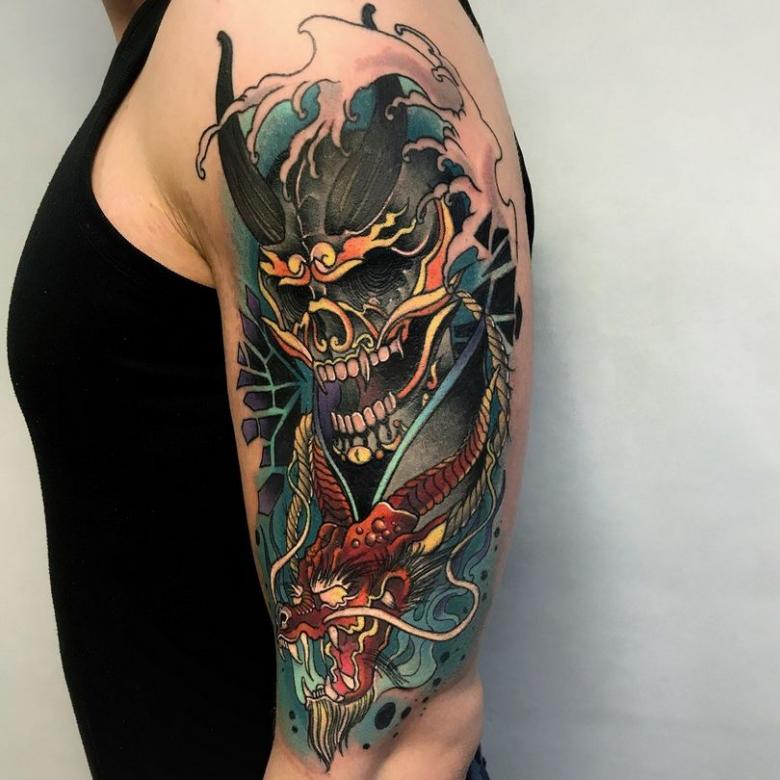
Men's and women's options
The choice of drawing for female and male bodies has its own nuances. Undoubtedly, everyone is free to choose what will bring him more joy.
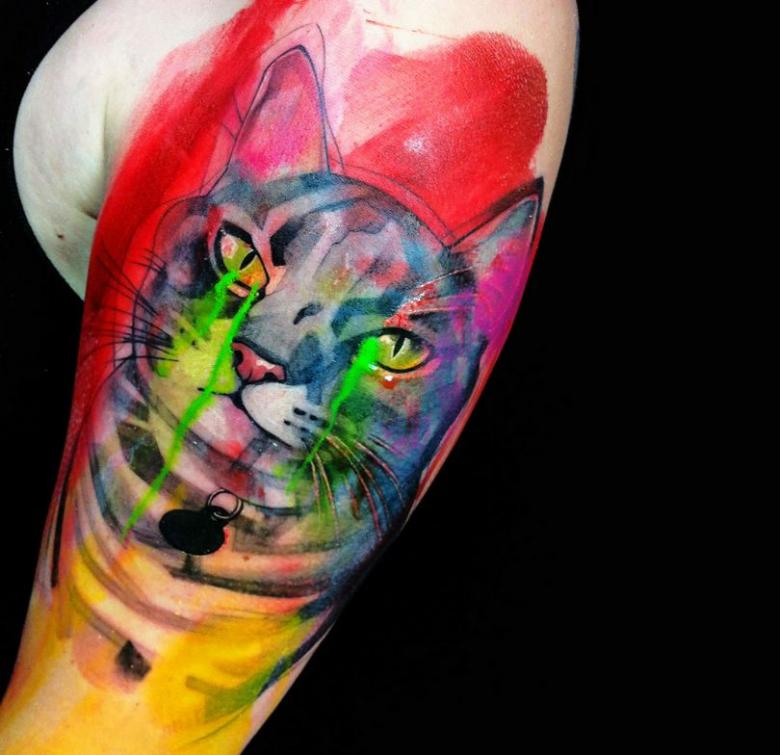
If a man wants to see a rainbow butterfly on his abs - you're welcome! But, observations show that often girls and guys have some separation in the choice of style and composition.
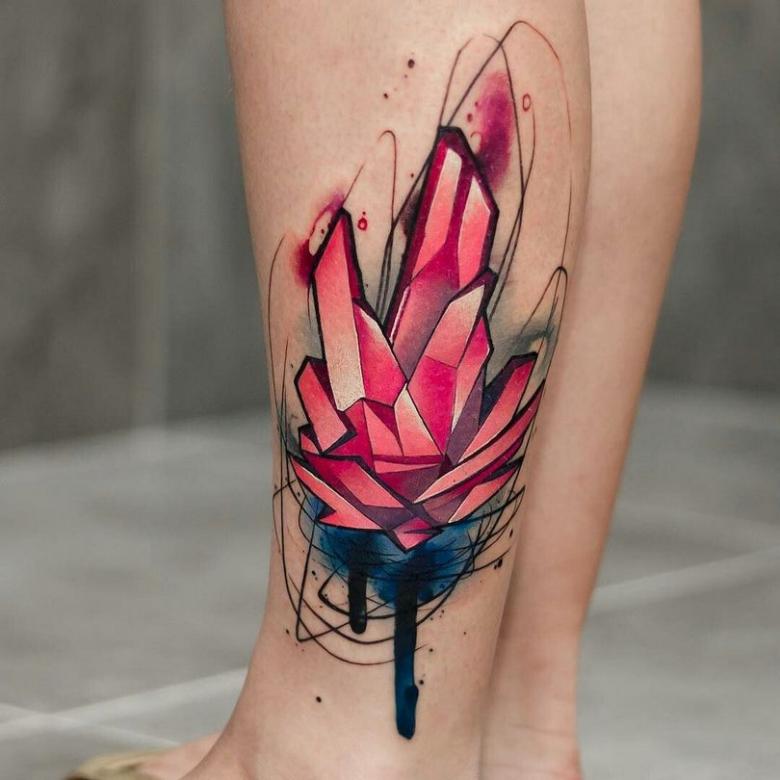
Girls with tattoos seek to attract attention and advantageously emphasize their natural data. Therefore they usually choose something delicate: natural motifs like flowers and animals, fantasy creatures, ethnic ornaments.
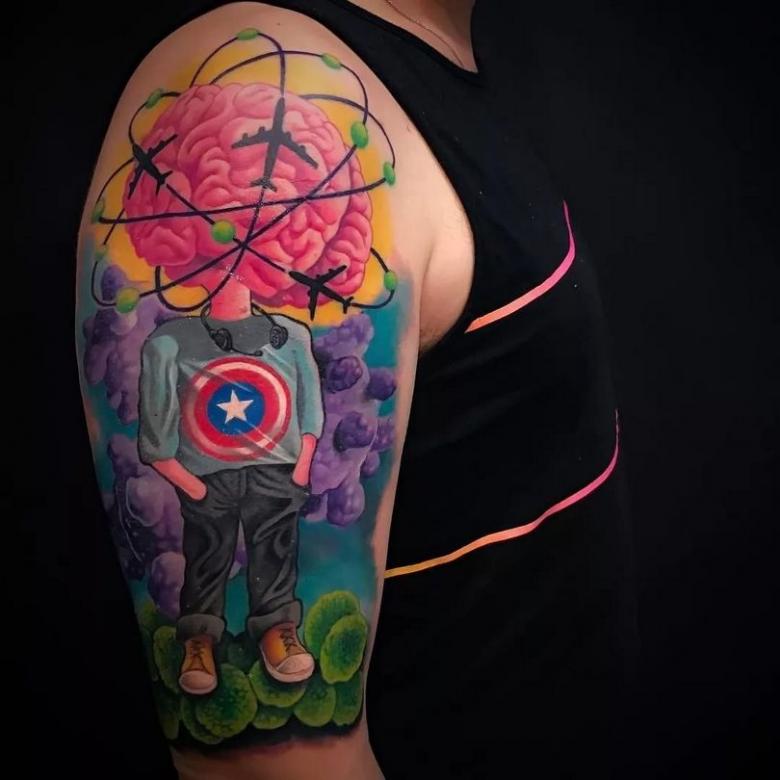
Men prefer something more intense, contrasting and harsh. There's realism, religious subjects, and portrait techniques. Natural motifs are also present - animals symbolizing courage/strength/authority (wolves, horses, dragons, eagles).
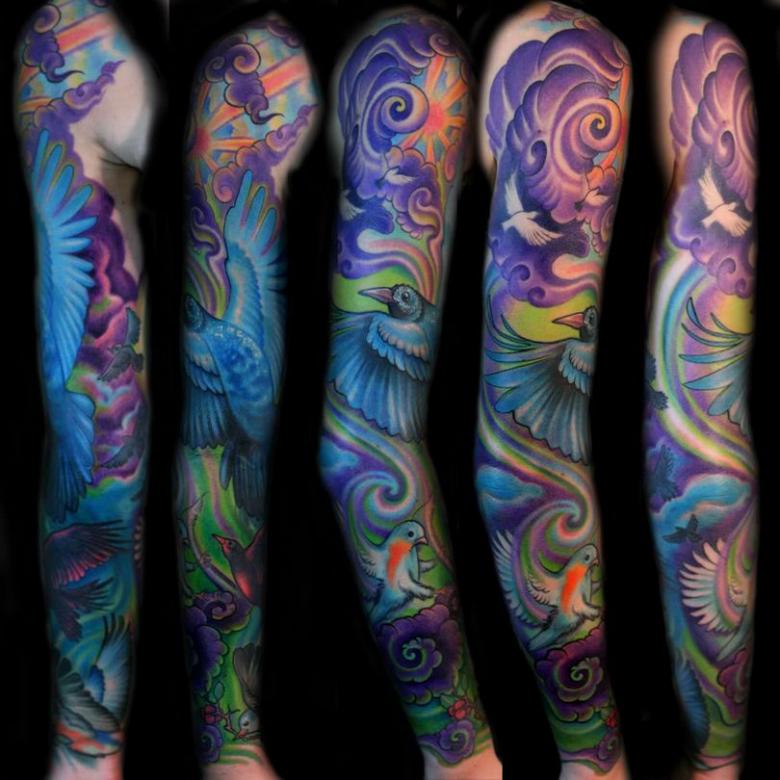
Many techniques and styles can't do without bright colors and shades. The main thing is a good combination. Choosing a tattoo, remember - only you have to wear it on your body all your life. Exactly you have to love her and that you she should please every day.


